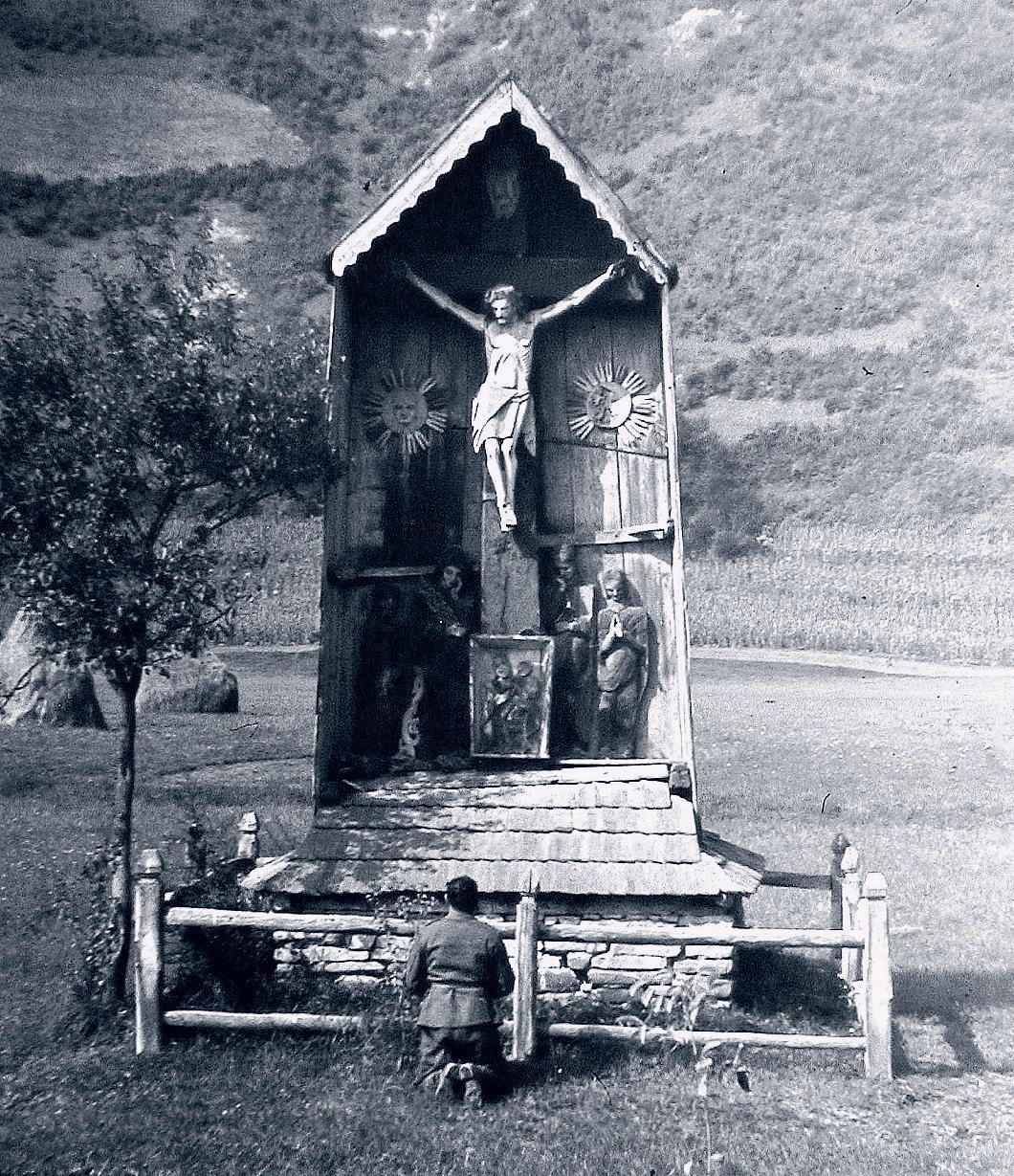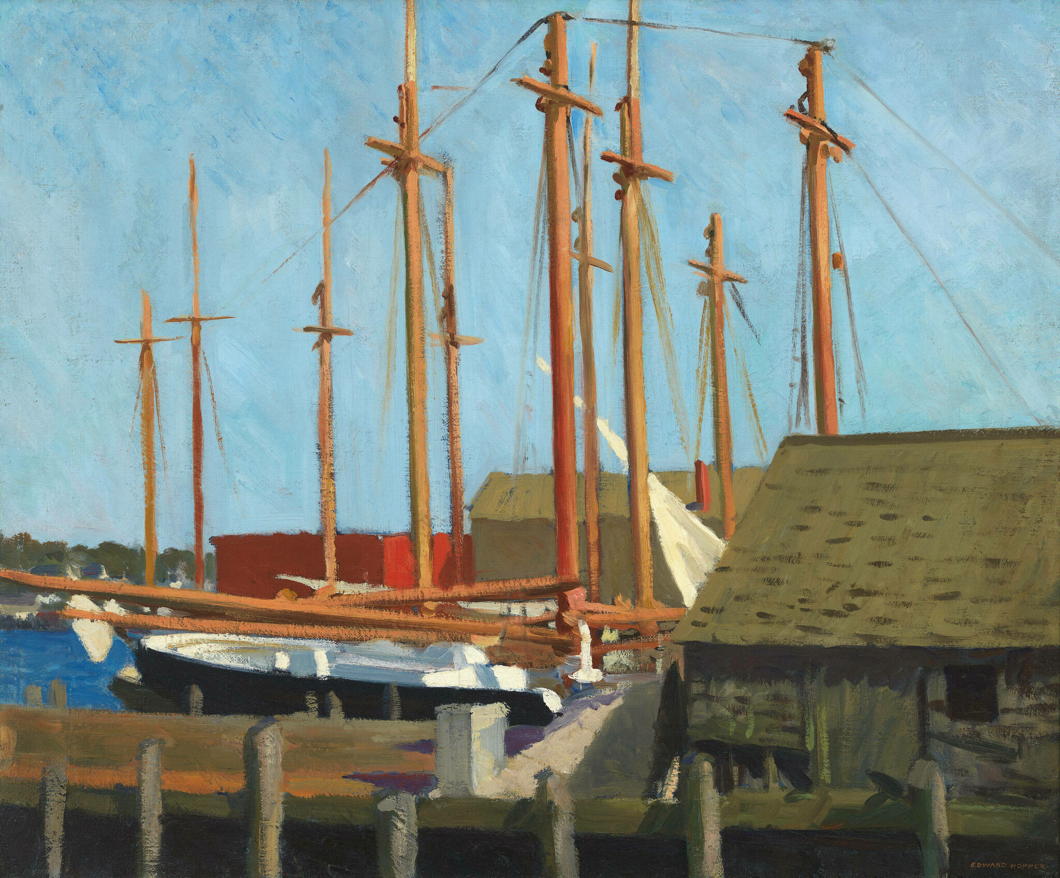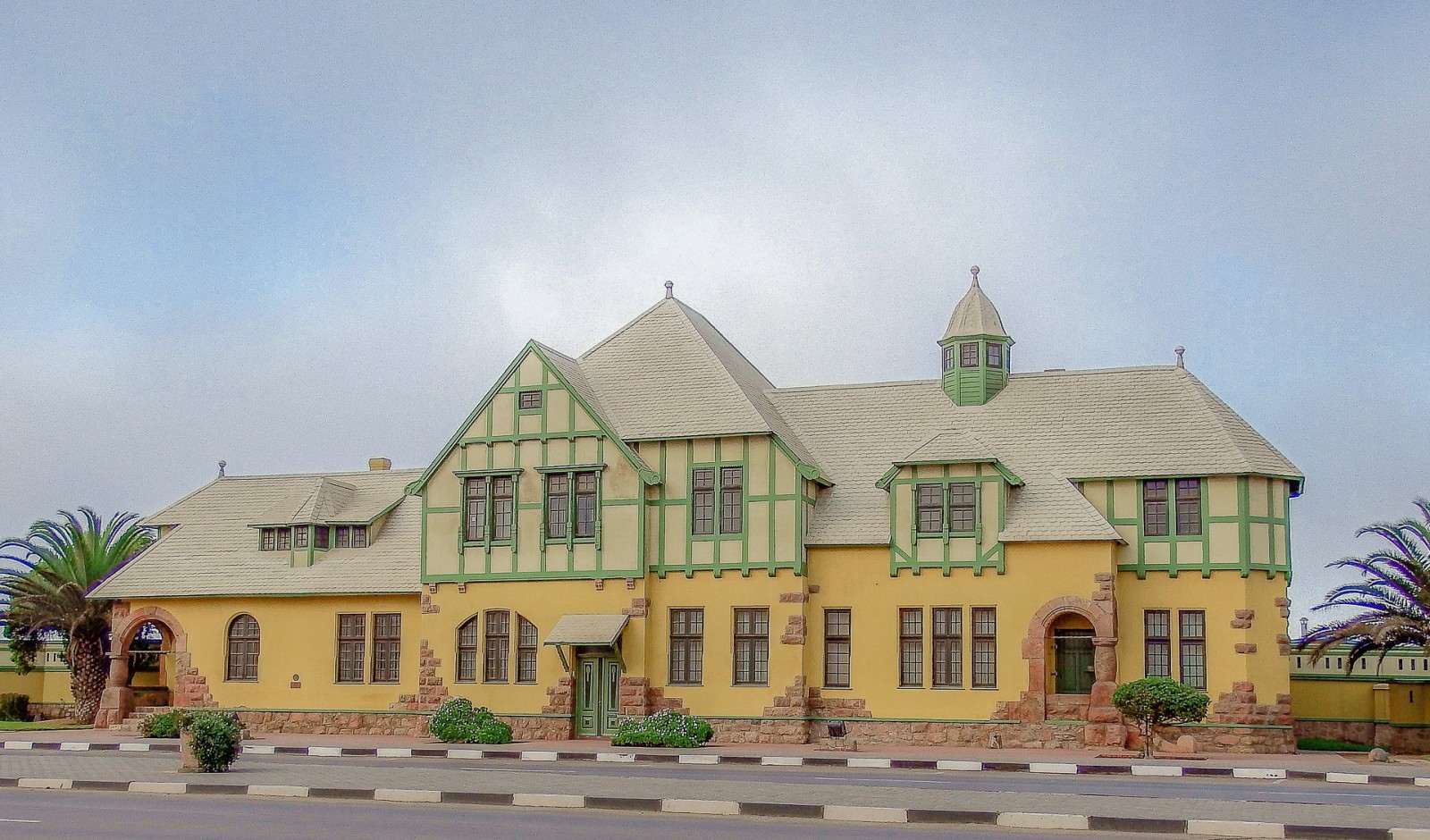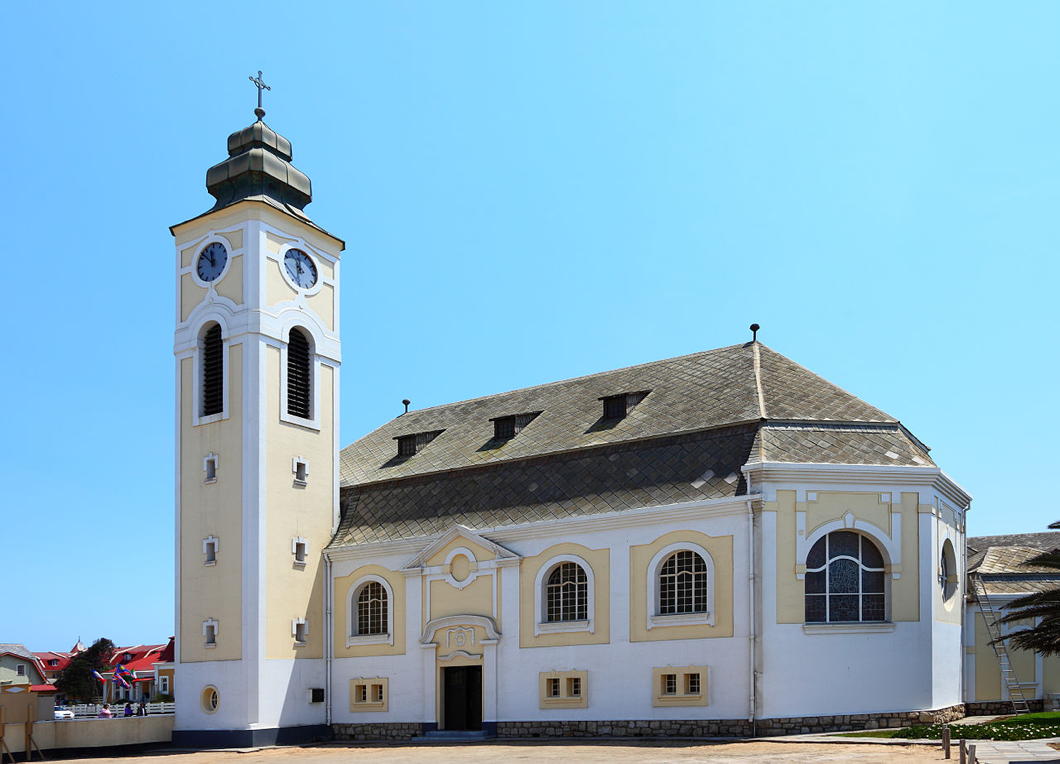
About Andrew Cusack
 Writer, web designer, etc.; born in New York; educated in Argentina, Scotland, and South Africa; now based in London.
Writer, web designer, etc.; born in New York; educated in Argentina, Scotland, and South Africa; now based in London. read more
News
Blogs
Reviews & Periodicals
Arts & Design
World
France
Mitteleuropa
Knickerbockers
Argentina
The Levant
Africa
Cape of Good Hope
Netherlands
Scandinavia
Québec
India
Muscovy
Germany
Academica
‘The first great commercial people’
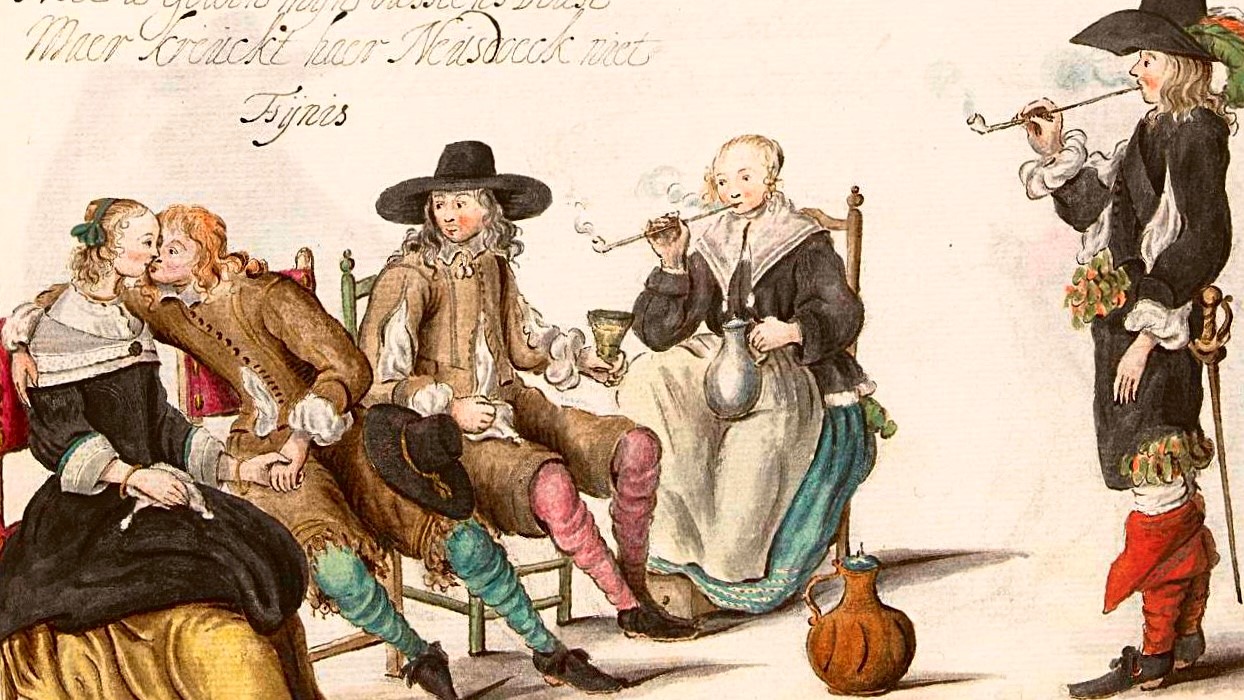
[…]
And it was for this same reason that they were unable to maintain that supremacy: for all its busy tenacity, their effort lacked a higher inspiration and, therefore, real vitality. Numerically, too, they were too few to be able for long to subdue and batten on half the world. It was the same maladjustment which turned Sweden’s taste of world-power into an episode: the national basis was too small.
There is no doubt that the cultural level was at that time higher in Holland than in the rest of Europe. The universities enjoyed an international reputation. Leyden in particular was accounted supreme in philology, political science, and natural philosophy.
It was in Holland that Descartes and Spinoza lived and worked, as also the famous philologists Heinsius and Vossius, the great jurist-philosopher Grotius, and the poet Vondel, whose dramas were imitated all the world over.
The Elzevir dynasty dominated the European book trade, and the Elzevir publications — duodecimo editions of the Bible, the classics, and prominent contemporaries— were appreciated in every library for their elegant beauty and their correctness.
At a time when illiteracy was still almost universal in other lands, nearly everyone in Holland could read and write; and Dutch culture and manners were rated so high that in the higher ranks of society a man’s education was considered incomplete unless he could say that he had been finished off in Holland, “civilisé en Hollande”.
The colonising activities of the Dutch set in practically with the new century, and fill the first two-thirds of it. They quickly gained a footing in all quarters of the world.
On the north-east coast of South America they took possession of Guiana, and in North America they founded the New Amsterdam which was later to become New York: centuries afterwards the Dutch or “Knickerbocker” families still constituted a sort of aristocracy.
They spread themselves over the southern-most tip of Africa, where they became known as Boers, and imported from there the excellent Cape wines.
One whole continent bore their name: namely, New Holland — the later Australia — round which Tasman was the first to sail. Tasman did not, however, penetrate to the interior, but supposed Tasmania (which was named after him) to be a peninsula.
The Dutch were also the first to land on the southern extremity of America, which was named Cape Horn (Hoorn) after the birthplace of the discoverer.
Their greatest acquisitions, however, were in the Sunda islands: Sumatra, Java, Borneo, Celebes, and the Moluccas all came into their possession.
Extending out to Ceylon and Further India, by 1610 they had already founded their main base, Batavia, with its magnificent trade-buildings. In fact they ruled over the whole Indian archipelago. For a time they even held Brazil.
With all this, they never, in the true sense of the word, colonised, but merely set up trading centres, peripheral depots, with forts and factories, intended only for the economic exploitation of the country and the protection of the sea routes.
Nowhere did they succeed in making real conquests; for these, as we said before, they had not the necessary population, nor had they, as a purely commercial people, the smallest interest in doing so.
Their chief exports were costly spices, rice, and tea. To the last-named Europe accustomed itself but slowly. At the English Court it first appeared in 1664 and was not considered very palatable — for it was served as a vegetable. In France it was known a generation earlier, but even there it had to make its way slowly through a mountain of prejudice.
Moreover, its consumption was limited by the Dutch themselves, who, having a monopoly to export it, raised the prices to the level of sheer extortion. This was in fact their normal procedure throughout, and they did not shrink from the most infamous practices, such as the burning of large pepper and nutmeg nurseries and the sinking of whole cargoes.
Their home production, too, dominated the European market with its numerous specialities. All the world bought their clay pipes; a fishing fleet of more than two thousand vessels supplied the whole of Europe with herrings; and from Delft, the main seal of the china industry, the popular blue and white glazed jugs, dishes, and table implements, tiles, stoves, and fancy figures went forth to all points of the compass.
One Dutch article that was in universal demand was the tulip bulb. It became a sport and a science to breed this gorgeous flower in ever new colours, forms, and patterns. Immense tulip farms covered the ground in Holland, and amateurs or speculators would pay the price of an estate for a single rare fancy breed.
The get-rich-quick people threw themselves into the “option” game: that is, they sold costly specimens, which often existed only in imagination, against future delivery, paying only the difference between the agreed price and the price quoted on settling day. It is indeed the Dutch who may claim the dubious honour of having invented the modem stock-exchange system with all the manipulative practices that we know today.
The great tulip crash of 1637, which was the result of all this bubble trading, is the first stock-exchange collapse in the history of the world. The shares of the Dutch trading companies, in particular the East Indian (floated in 1602) and the West Indian (1621), were the first stocks to be handled in the stock-broking manner (their par value speedily tripled itself, and the dividends rose to twenty per cent and higher); and the Amsterdam Exchange, which ruled the world, became the finishing school for the game of “bull” and “bear.”
Then, too, during the first half of the seventeenth century, the Dutch were Europe’s sole middlemen: their mercantile marine was three times as big as that of all other countries.
And although — or indeed because — the whole world depended on it, there arose a bitter hatred against it (contrasting strangely with the extravagant admiration accorded to their manners and comforts) which was intensified by the brutal and reckless extremes to which they went in maintaining their advantage. “Trade must be free everywhere, up to the gates of hell,” was their supreme article of faith.
But by free trade they meant freedom for themselves — in other words, a ruthlessly exploited monopoly. This was also the kind of freedom that Grotius meant when in his famous treatise on international law, Mare liberum, he stated that the discovery of foreign countries does not in itself give right of possession, and that the sea by its very nature is outside all possession and is the property of everyone.
But as the sea was in fact in the possession of the Dutch, this liberal philosophy was no more than the historical mask for an economic terrorism.
In this wise the “United States” became the richest and most prosperous country of Europe. There was so much money that the rate of interest was only two to three per cent.
But although naturally the common people lived under far better conditions than elsewhere, the great profits were made by a comparatively small oligarchy of hard, fat money-bags, the so-called “Regent-families” who were in almost absolute control — since they filled all the leading posts in the government, the judicature, and the colonies — and looked down on the common man, the “Jan Hagel,” as contemptuously as did the aristocrats of other countries.
Opposed to them was the party of the Oranges, who by an unwritten law held the hereditary town governorships; their aim was indeed a legitimate monarchy, but they were nevertheless far more democratic in their ideas than the moneyed class, and were therefore beloved of the people. The best talent, military and technical, gathered about them. The first strategists of the age were on their staff. They nurtured a generation of virtuosi in siege warfare, privateering, artillery, and engineering science. The water-network created by them, which covered the whole of Holland, was considered a world marvel. They were masters, too, of diplomacy. …
Fortress London
What could be more mundane than the Country Bus Services Map? Not when you put the design in the hands of Max Gill. Younger brother to the more famous (but controversial) Eric Gill, Lesilei Macdonald “Max” Gill was a polymathic artist: cartographer, designer, sculptor, painter, and letterer.
In 1914, Frank Pick, inventor of the London Underground brand, hired Max Gill to create the Wonderground Map. Each Underground station had a copy of this map with its inventive and amusing illustrations, such as the two figures hurling hams at Hurlingham. As one newspaper said when it was introduced, ‘People spend so long looking at this map – they miss their trains yet go on smiling.’
The Country Bus Services Map dates from 1928 and depicts London as a great crammed and crowded fortress city from which bus services flow forth to allow the citizens to escape its walls and experience the rustic beauty of the surrounding countryside.
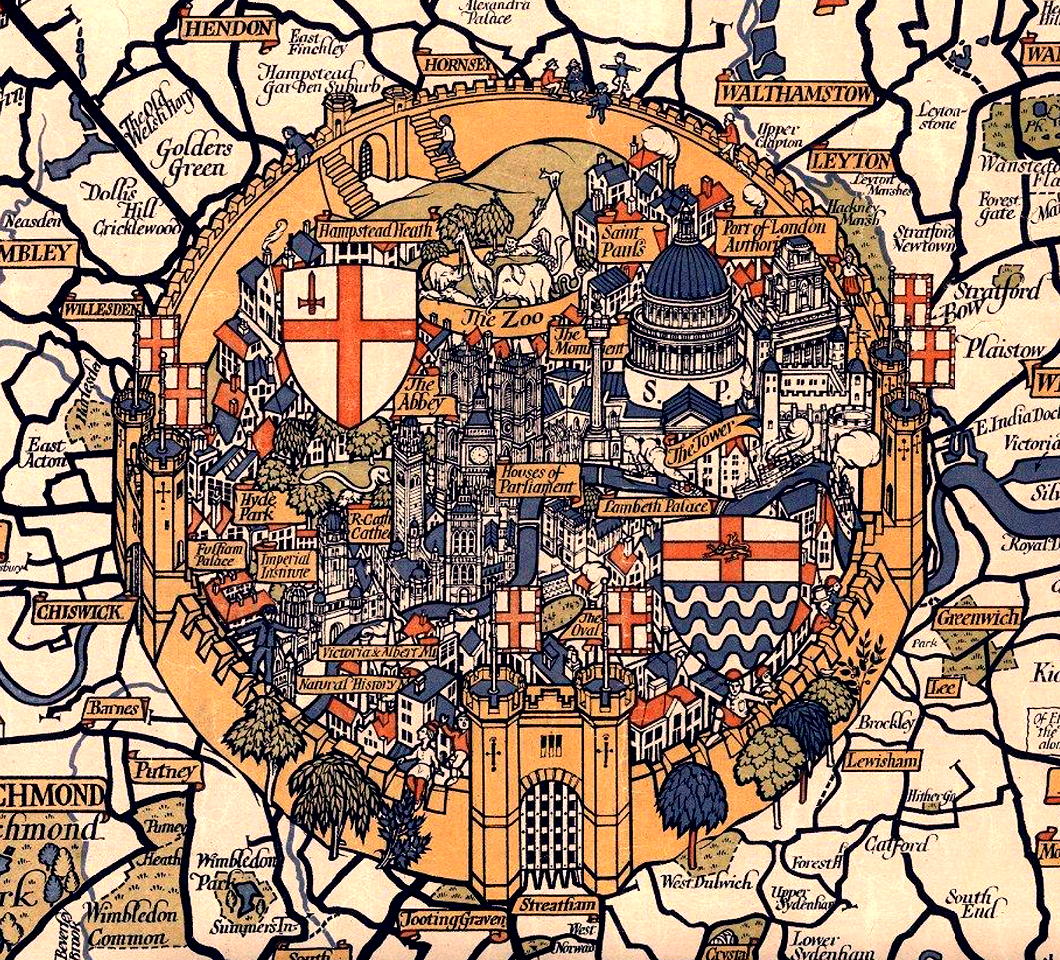
St Paul’s Cathedral looms large between shields depicting the arms of the City and County of London, with the Monument, the Port of London Authority, and the Tower cuddling up to it.
Lambeth Palace and the Oval at Kennington are the only features south of the river that make it into Gill’s walled metropolis.
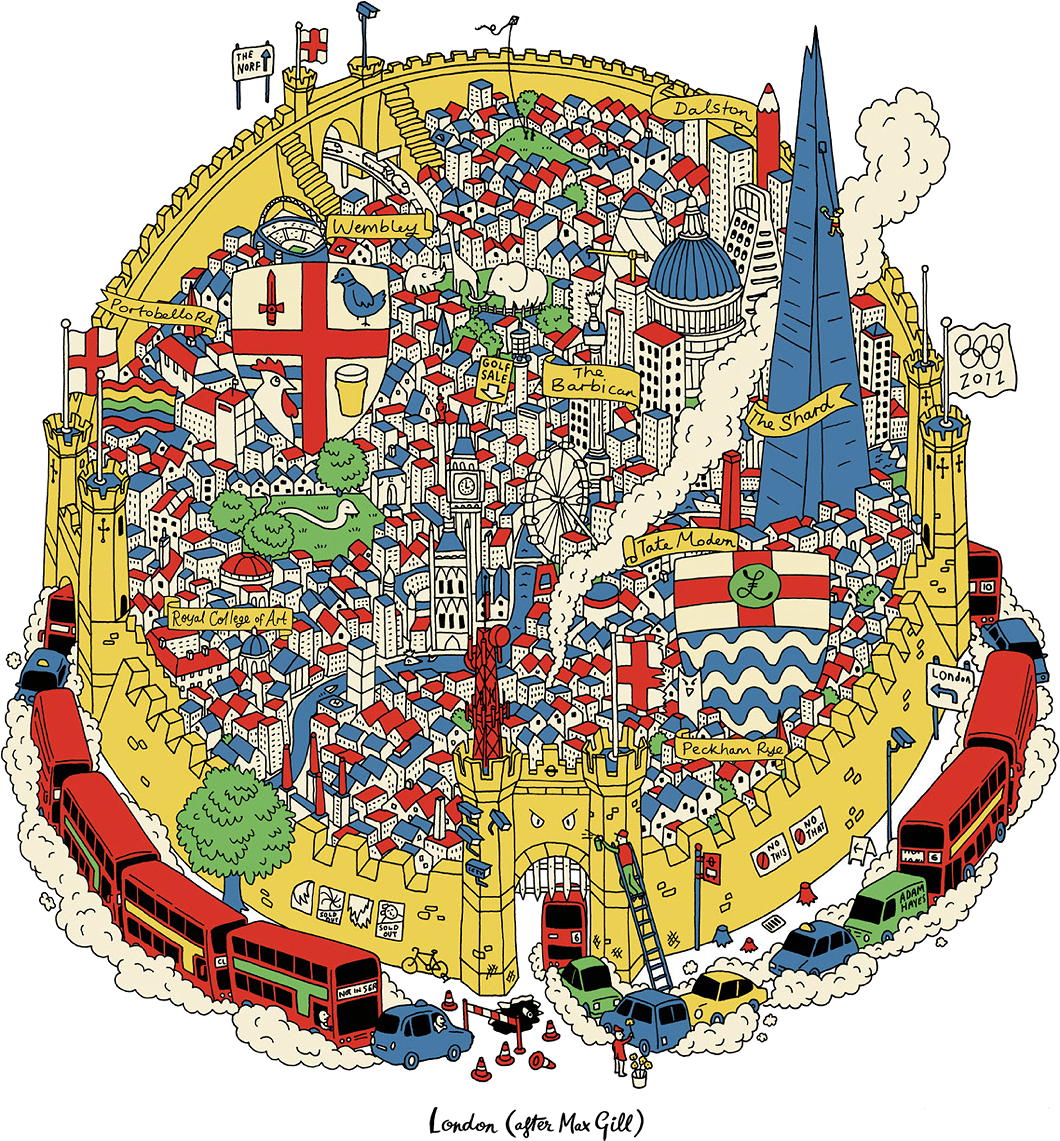
In more recent years, the designer and typographer Adam Hayes decided to issue a cheeky update entitled ‘London (After Max Gill)’ (available as a print as well).
Choked by smoggy traffic, the Shard now looms large, while a cheese grater represents the Cheesegrater. Tree stumps are joined by fussy signs instructing NO THIS and NO THAT and CCTV cameras are omnipresent.
‘Wonderground’ and the Country Bus Services Map were not the limits of Max Gill’s work for London Underground. The London Transport Museum holds many examples of his work within there collection, some of which have been digitised and are viewable online — though irritatingly not in any sufficiently zoomable detail.

St Paul’s: Before and After the War
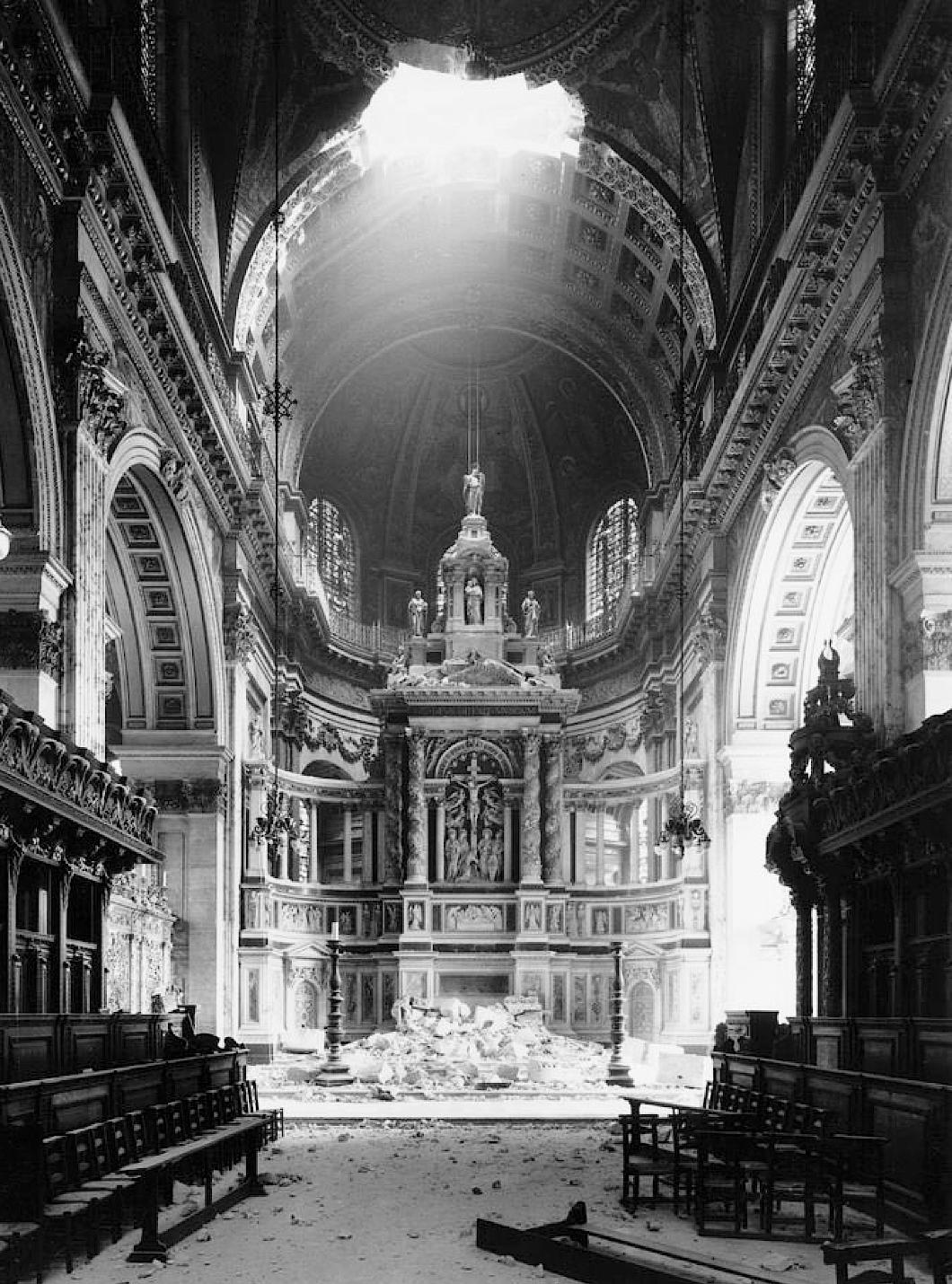
Wren’s post-Fire St Paul’s Cathedral was an icon of resistance to German aggression and an emblem of survival during the Blitz, but while the dome survived the church did suffer damage: A bomb fell threw the roof of the east end on the evening of 10 October 1940, tumbling masonry and destroying the high altar.
Despite the reredos remaining largely intact, as can be seen in the photograph above, it was decided to remove it and rebuild the High Altar under a baldacchino as Sir Christopher Wren had intended.
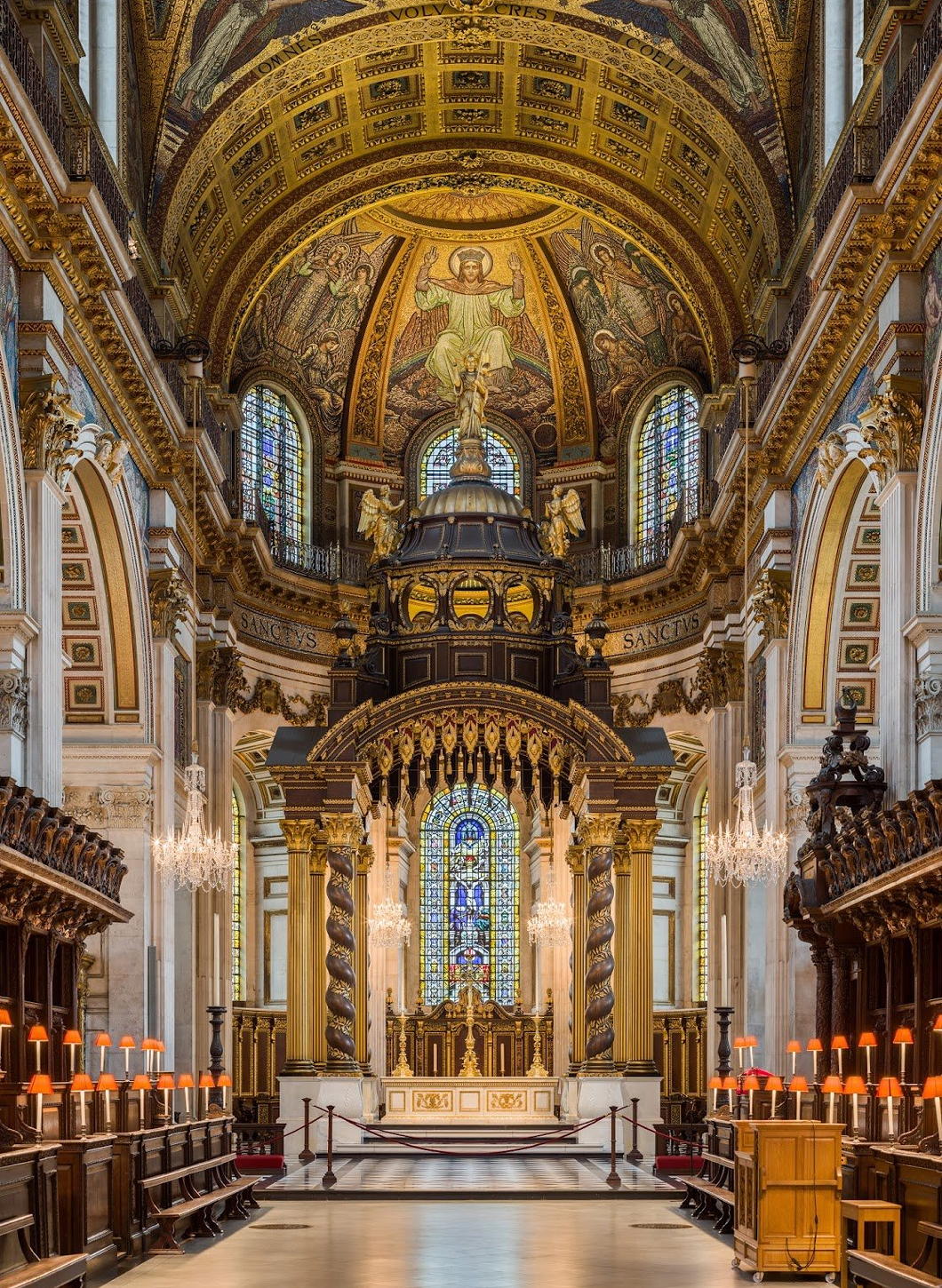
In 1958 the new High Altar, designed by W Godfrey Allen and Steven Dykes Bower, was dedicated with an American Memorial Chapel behind it.
This was proposed by the Dean of St Paul’s and General Eisenhower volunteered to raise money for it in the United States.
The Dean turned down the Supreme Commander’s offer, saying that this would be paid for by Britons as an appreciation of the American sacrifice during our common struggle.
A roll of honour lists the names of the 28,000 Americans who gave their lives while stationed from Great Britain.
Perhaps more intriguing than either view is the one below of the interior of St Paul’s before the Victorian scheme for the High Altar was executed.
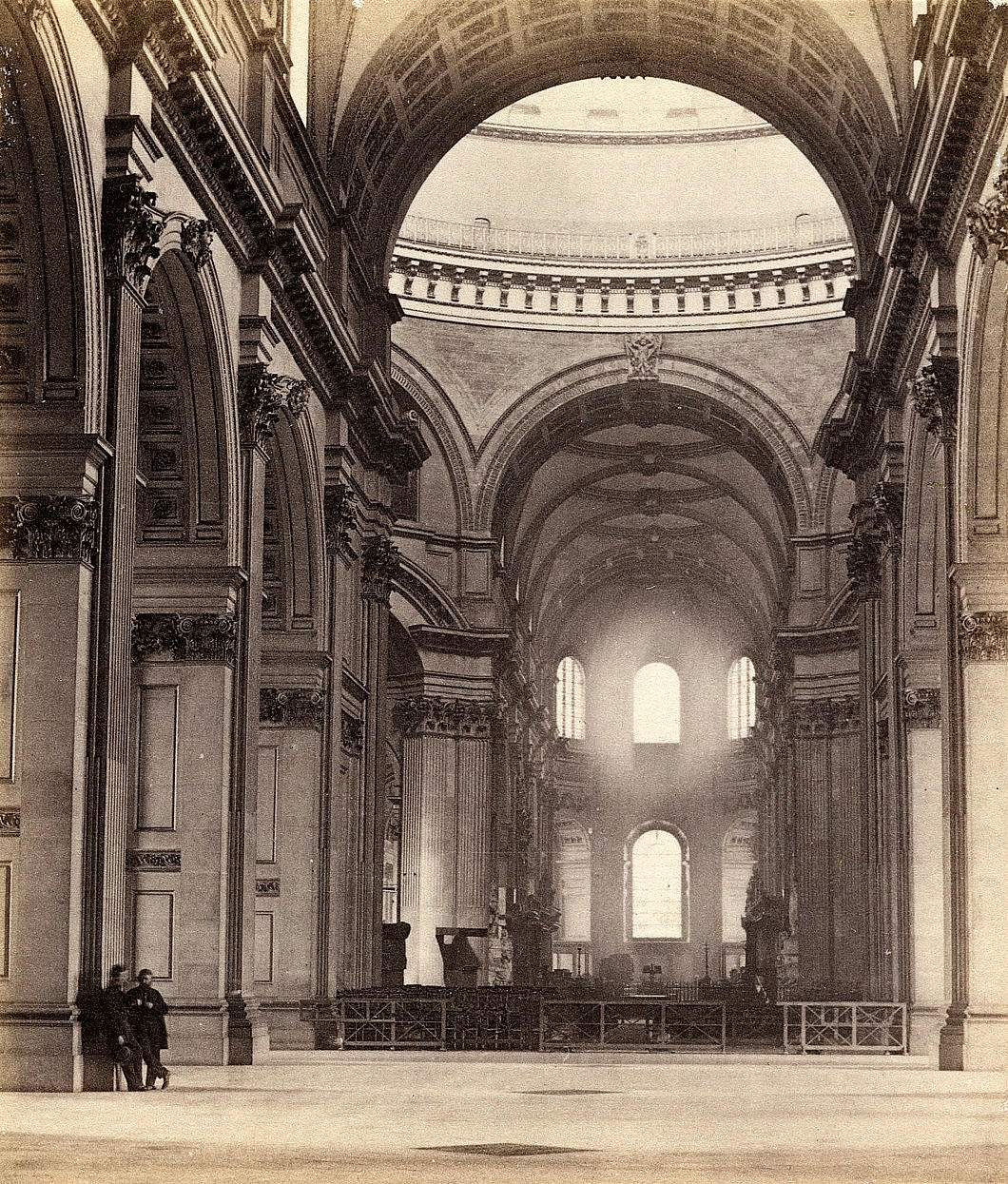
The Ukrainians’ Secret Weapon
For those looking for an explanation as to the notable success of the Ukrainians on the battlefield in the current unpleasantness taking place in their country, look no further.
In a thread of tweets, the biblophile Incunabula reveals the Ukraine’s secret weapon: the Peresopnytsia Gospels (Пересопницьке Євангеліє).

“All six Ukrainian Presidents since 1991,” Incunabula writes, “including Volodymyr Zelensky, have taken the oath of office on this book: the sixteenth-century Peresopnytsia Gospels, one of the most remarkably illuminated of all surviving East Slavic manuscripts.”
“The Peresopnytsia Gospels were written between 15 August 1556 and 29 August 1561, at the Monastery of the Holy Trinity in Iziaslav, and the Monastery of the Mother of God in Peresopnytsia, Volyn.”
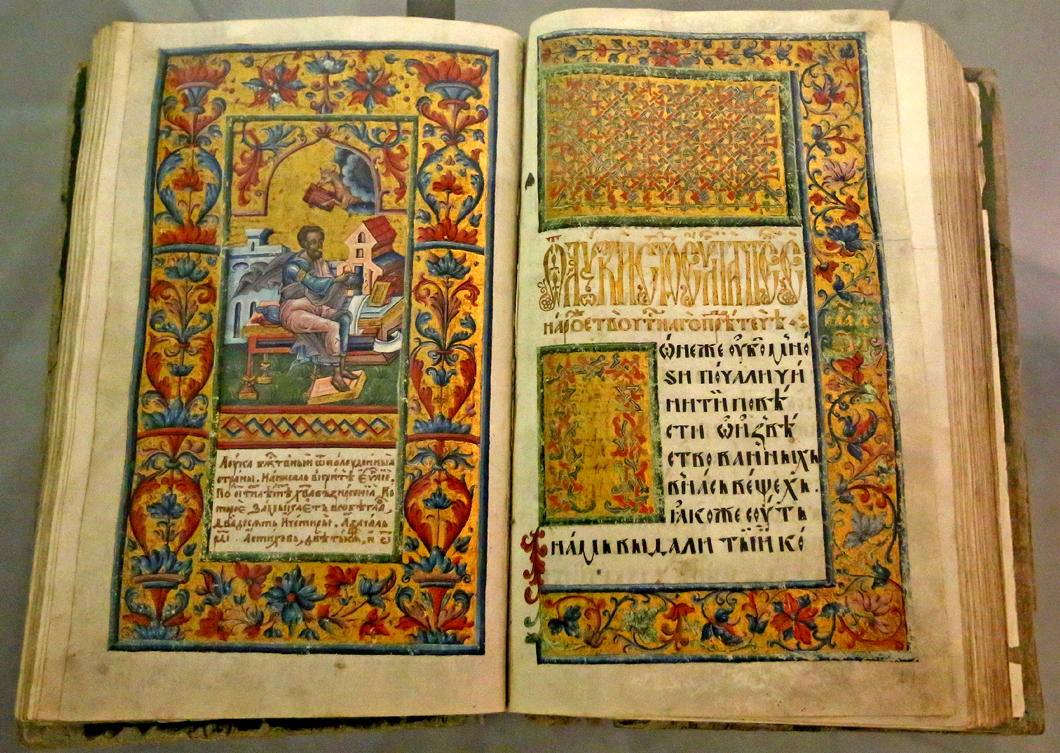
“This manuscript is the earliest complete surviving example of a vernacular Old Ukrainian translation of the Gospels. Its richly ornamented miniatures belong to the very highest achievements of the artistic tradition of the Ukrainian and Eastern Slavonic icon school.”
“The Peresopnytsya Gospels were commissioned in 1556 by Princess Nastacia Yuriyivna Zheslavska-Holshanska of Volyn, and her daughter and her son-in-law, Yevdokiya and Ivan Fedorovych Czartoryski. After its completion the book was kept in the Peresopnytsya Monastery.” (more…)
Irving’s Sunnyside
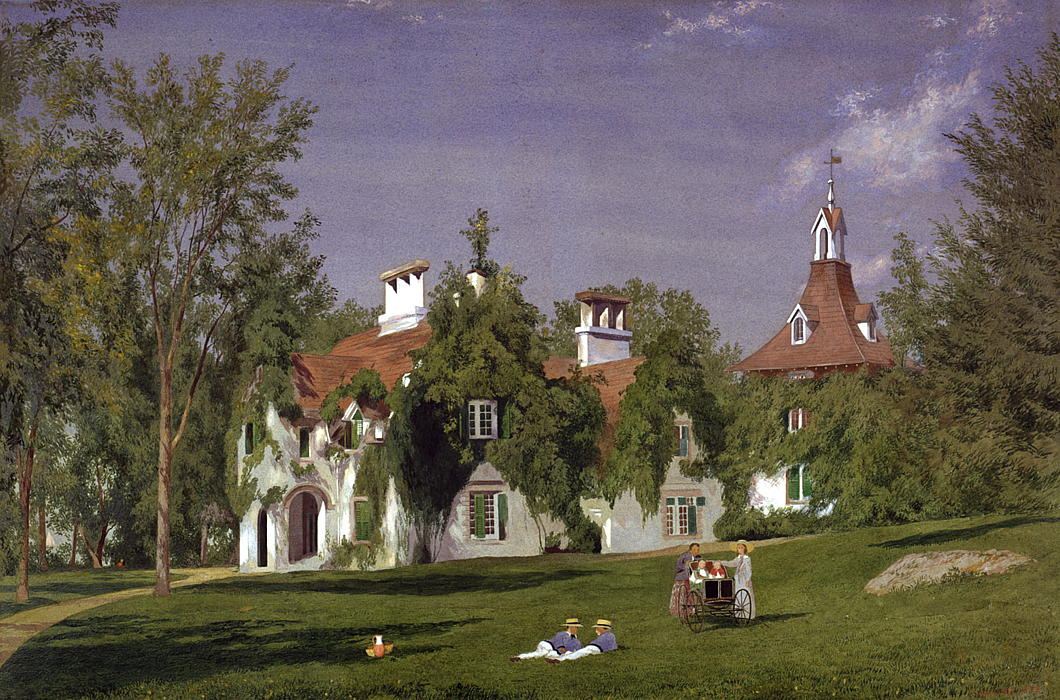
From the Westchester Herald (as reprinted in the Times of London, 24 April 1835):
On the premises just mentioned there is still standing an old stone house, built in the ancient Dutch style of architecture, during the French war, by Wolfred Acker, and afterwards purchased by Van Tassel, one at least of whose descendants has been immortalized in story by the racy pen of its present gifted proprietor.
It is the identical house at which was assembled the memorable tea-party, described in the legend of Sleepy Hollow, on that disastrous night when the ill-starred Ichabod was rejected by the fair Katrina, and also encountered the fearful companionship of Brom Bones in the character of the headless Hessian.
The characters in this delectable drama are mostly known to our readers; but time, that tells all tales, enables us to add one item more, which is, that the original of the sagacious schoolmaster was not the individual generally considered as such, who still resides in this country, but Jesse Martin, a gentleman who bore the birchen sway at the period of which the legend speaks, and who afterwards removed further up the Hudson, and is since deceased.
The location is a most delightfully secluded spot, eminently suited to the musings and mastery of mind; and it is the design of the proprietor, without changing the style or aspect of the premises, to put them in complete repair, and occupy them as a place of retirement and repose from the business and bustle of the world.
Special Mission to Rome
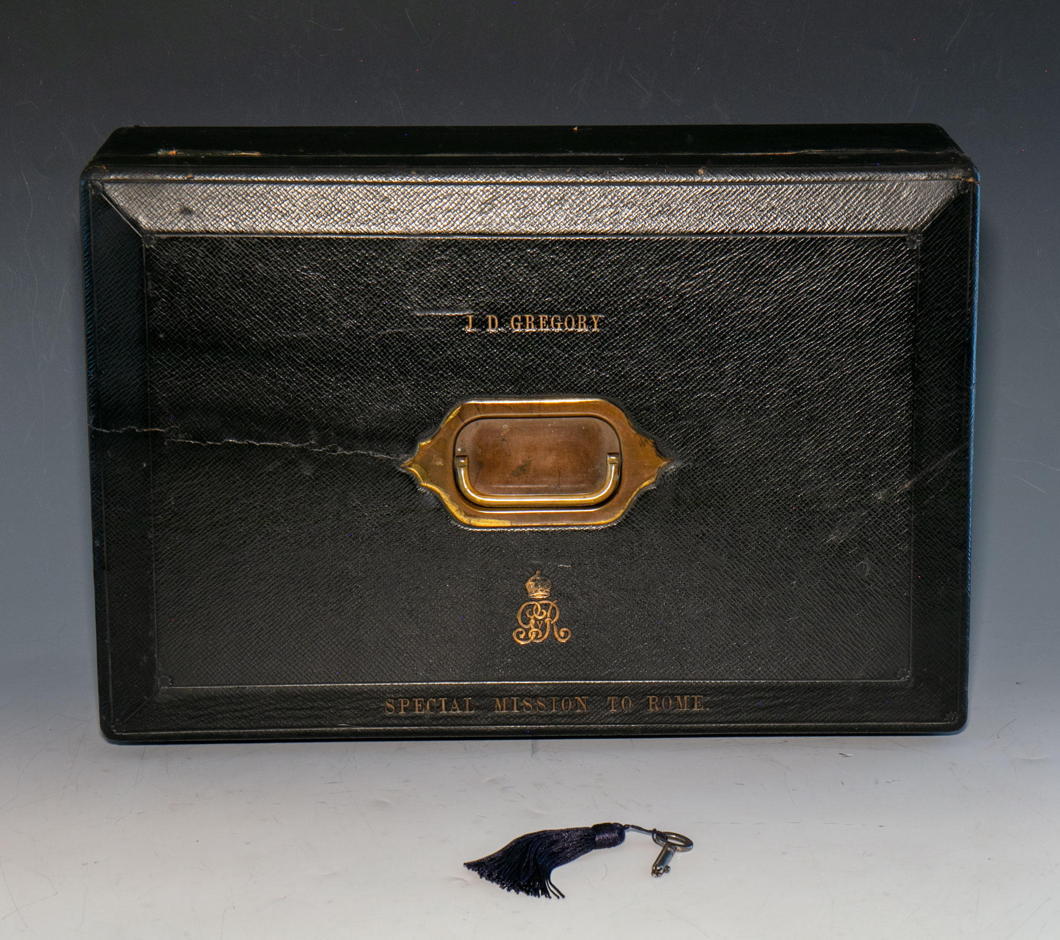
RELATIONS BETWEEN THE Court of St James’s and the Holy See have evolved in the many centuries since the Henrician usurpation. At times, such as during the Napoleonic unpleasantness, the interests of London and the Vatican were very closely aligned — despite the lack of full formal diplomatic relations. Later in the nineteenth century Lord Odo Russell was assigned to the British legation in Florence but resided at Rome as an unofficial envoy to the Pope.
It wasn’t until 1914 that the United Kingdom sent a formal mission to the Vatican, but this was a unique and un-reciprocated diplomatic endeavour — a full exchange of ambassadors would have to wait until 1982. (Until then, the Pope was represented in London only by an apostolic delegate to the country’s Catholic hierarchy rather than any representative to the Crown and its Government.)
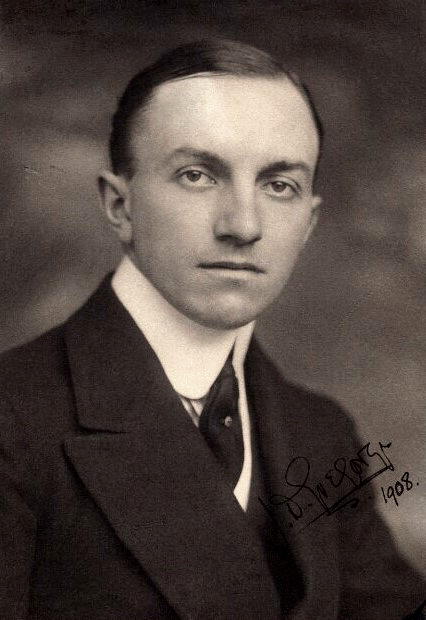 Within a year of the Special Mission to Rome being established, John Duncan Gregory (later appointed CB and CMG) was assigned to it. A diplomat since 1902 who had previously worked in Vienna and Bucharest, he was one of the central figures in the curious ‘Francs Affair’ of 1928, when two British diplomats were believed to have unduly abused their positions to speculate in currency. Despite being cleared of illegality, J.D. Gregory was dismissed from his diplomatic posting — though he was later rehabilitated.
Within a year of the Special Mission to Rome being established, John Duncan Gregory (later appointed CB and CMG) was assigned to it. A diplomat since 1902 who had previously worked in Vienna and Bucharest, he was one of the central figures in the curious ‘Francs Affair’ of 1928, when two British diplomats were believed to have unduly abused their positions to speculate in currency. Despite being cleared of illegality, J.D. Gregory was dismissed from his diplomatic posting — though he was later rehabilitated.
If there are any enthusiasts of the curious subcategory of accoutrement known as the despatch box, J.D. Gregory’s one dating from his time in Rome is currently up for sale from the antiques dealer Gerald Mathias.
It was manufactured by John Peck & Son of Nelson Square, Blackfriars, Southwark — not very far at all from me as it happens. (more…)
175 Years of St George’s Cathedral
ONE HUNDRED AND SEVENTY-FIVE years ago, at a time of great uncertainty in Europe, St George’s in Southwark was opened solemnly by Bishop Wiseman — writes the Cathedral Archivist Melanie Bunch. The ceremony was attended by thirteen other bishops in all their finery, of whom four were foreign. Hundreds of clergy of all ranks were in the procession and many of the Catholic aristocracy of England were present. The music was magnificent, the choir including professional singers.
Pugin’s neo-Gothic church was impressive but not finished, and it was not to be a cathedral for another four years. Dr Wiseman, who was both the chief celebrant and the preacher, was bishop of a titular see, as the Catholic dioceses of England and Wales did not yet exist. Nonetheless the opening marked a significant stage in the revival of the Catholic Church in this region. The spur had been the spiritual needs of the poor Irish who had long formed settled communities in parts of London and other cities. The plans for the church had been drawn up in 1839 – before the severity of the famine in Ireland, which began in 1845, could have been foreseen. Some had considered the size of the new church unnecessary, but it turned out to be providential, as immigration from Ireland to this locality and elsewhere was reaching a peak at this time.
The extraordinary turmoil in Europe that had started early in the year in Sicily could not be ignored. In February Louis-Philippe was dethroned in France. There was anxiety that revolution might cross the Channel. Pugin decided that he should obtain muskets to defend his church of St Augustine under construction in Ramsgate. Revolution spread to German and Italian states and countries under Austrian rule. For four days in late June, there was a brief and bloody civil uprising in Paris.
While Europe was ablaze, London was calm, and the opening went ahead. In his homily, Wiseman praised God for all his mercies to this country. From our perspective, we might have expected that he would have spoken about the dark days of persecution, or at least the struggles of the recent past to get such a large church built, constantly hampered by lack of funds. Rev. Dr Thomas Doyle, whom we honour as the founder of the Cathedral, was present and assisting at the Mass, but his courage, faith, and dogged persistence over many years were not acknowledged on this occasion.
We might remember that a Catholic event like this had not been witnessed in England since the Reformation, seemingly prompting Wiseman to take the opportunity to explain to the non-Catholics present that the ceremony and display of the Catholic Church came from a desire to show greater respect for God. To the foreign bishops he said that their presence proved the unity and diversity of the Church. At the end of his homily, Wiseman caused a sensation by reading out a letter from the Archbishop of Paris, Mgr Affre, regretting that he could not attend the opening. By then it was known that he had already died from wounds received on the barricades while he was trying to mediate with the rebels. Wiseman called him a martyr.
Among others who never saw the opening are some who served St George’s mission with Thomas Doyle at the earlier chapel in London Road. Three of them had died before their time, only a few years before, from diseases endemic among their flock. We remember them and all who have served the Cathedral with gratitude. At the time of the opening, St George’s was the largest Catholic church in London, and for the next fifty years was to be the centre of Catholic life in the metropolis. Much has changed since, including the rebuilding of the Cathedral, but we give thanks to Almighty God who continues to sustain it. (more…)
Skeleton Coast Baroque
Examples of baroque architecture in Namibia are — sadly — not numerous enough to deserve so much as a monograph. (Of the Namibian jugendstil, we can say more.)
But being few does not mean not existing at all.
The best archetype of the Namibian baroque is the German Evangelical Lutheran Church in Swakopmund.
This beach town of 45,000 souls is known for its somewhat otherworldly architecture, the most common description of which might be Tropical Teutonic.
Just take a look at the Old Prison, whose moniker is something of a misnomer as it’s still in everyday use as the town lock-up.
In the 2000s, AMC filmed its remake of the classic television series ‘The Prisoner’ in Swakopmund.
“You couldn’t get more isolated than we are here,” the show’s star actor, Sir Ian McKellen, told the Daily Mail.
“Apart from being cut off by the sea in one direction and the desert in the other, the nearest big city, Cape Town, is two hours away by air. The tourist brochure lists the main attractions only as the prison, the war memorial and a steam engine museum named after Martin Luther.”
“But the most fascinating thing about this place is you never know what’s around the corner. You can walk down absolutely deserted streets, and believe there is no one else here. Then you pitch up at a restaurant and find it jammed to the rafters with people. Where did they all come from? What exactly is happening? It is like nowhere else on earth.”
The Mail’s journalist continues:
Then something happens which illustrates his point perfectly. Seemingly out of nowhere, a group of dog owners assemble outside Sir Ian’s apartment. The dogs are put through a series of trials before, after a few minutes and without fanfare, they all vanish into the rolling mist, as if instructed to do so by some unseen force. When it lifts, it is as if they had never been there.
“Typically Swakopmund,” says McKellen. “Strange sights everywhere.”
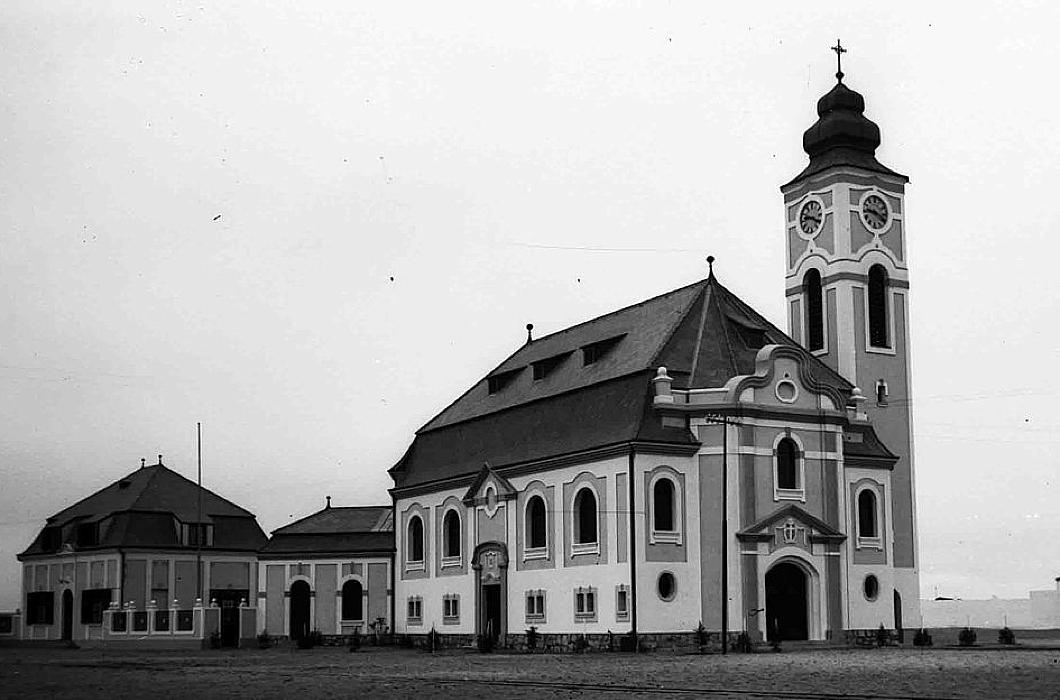
The Swakopmund church here is a congregation of the Deutsche Evangelisch-Lutherische Kirche in Namibia, one of three Lutheran denominations in the county.
The DELK is, obviously, for the German speakers who make up a third of the country’s whites (who altogether are six per cent of the population).
There is also the Evangelical Lutheran Church in Namibia, founded by Finnish missionaries and primarily made up of Ovambo and Kovango people, and the Rhenish-founded Evangelical Lutheran Church in the Republic of Namibia.
Like many Protestant churches in Africa (and beyond), the interior is unremarkable.
According to lore, the architect was a Bavarian, instigated by the government builder Otto Ertl, and the building was consecrated in January 1912 — twenty years after Curt von François founded Swakopmund.
Worth a look-at if you find yourself in the area.
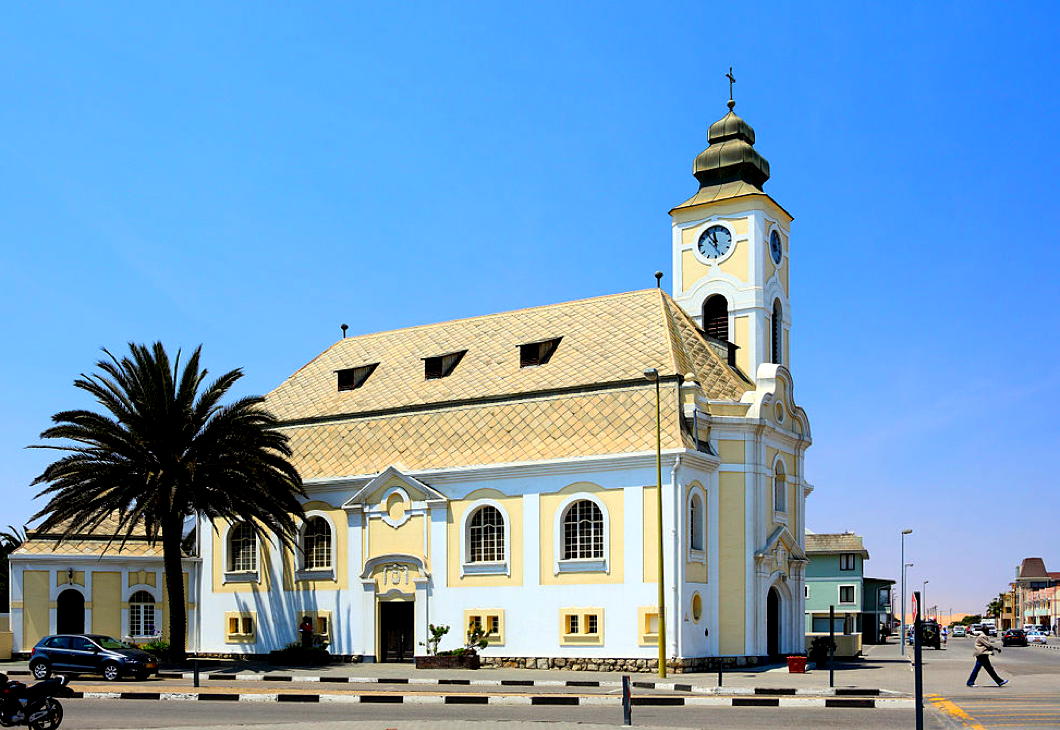
Sibiu/Hermannstadt
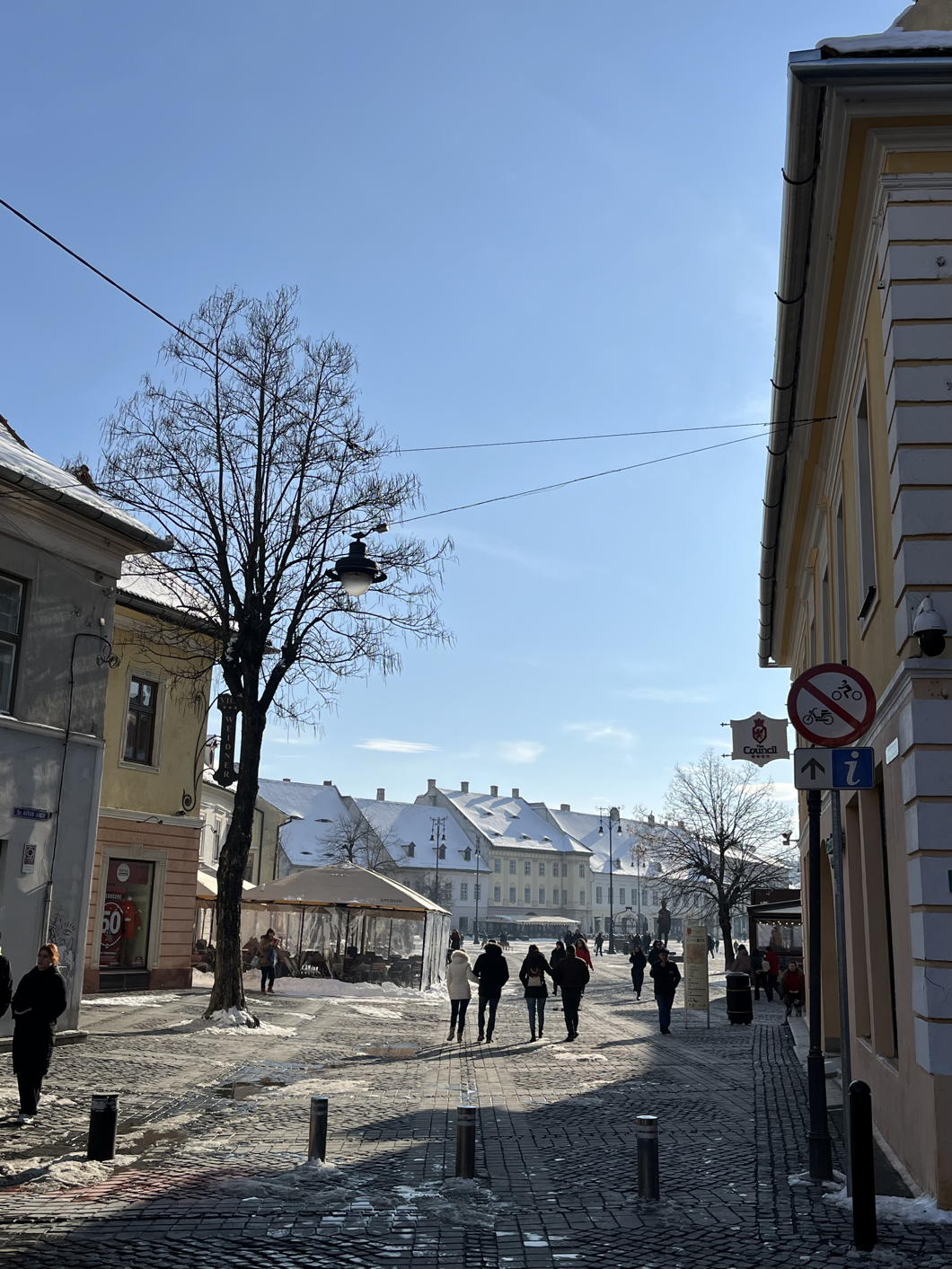
SIBIU’s name comes from a Bulgar-Turkic root word meaning “rejoice”, and having spent a few days in the city I can see why. It is handsome, clean, and clearly well looked after — perhaps well loved is the better term.
Unsurprisingly, the mayor partly responsible for this state of affairs was much vaunted for his efforts, to the extent that the Romanians elected him president of the entire country (and this despite him being an ethnic German).
As in all of Transylvania, there is a long history of mixture here, and while the past hundred years have seen a massive collapse in the Hungarian, German, and Jewish populations, many of them persevere all the same, sometimes even flourishing.
Hungarians are the largest and most visible minority in Transylvania — once the dominant people of this province of the Crown of St Stephen — but here in Sibiu they play second-fiddle to the Germans.
Arriving in the Church of the Holy Trinity in the great square for the Hungarian Mass on Sunday, the congregation at the Mass in German preceding it was still filtering away and clearly is the main event of the parish.
The Germans — or Saxons as they are often known — are today under two per cent of the city’s population but, as elsewhere, the Teutonic reputation for competence and efficiency means that a great many ethnic Romanians vote for the Germans’ party, the Democratic Forum of Germans in Romania.
When mayor Klaus Iohannis was elected to the Romanian presidency, he was succeeded as mayor by another member of the German community, the rather elegant Astrid Fodor.
But what of the ethnic Romanians that today make up ninety-five per cent of Sibiu’s townfolk? They are anything but ethnic chauvinists, and seem keen to preserve the traditions of the city and the province, and especially to highlight Sibiu’s distinctiveness. Those I had the pleasure of interacting with were effortlessly warm, courteous, and inviting. Their language is alluringly if mistakenly familiar.
Curiously, the Grand Duchy of Luxembourg maintains a consulate here in Sibiu / Hermannstadt with the ostensible excuse that the former German dialect of the town is a close relative of Luxemburgish. The connection bore fruit when Sibiu and Luxembourg City shared the honour of being European City of Culture in 2007.
It was around that time that Forbes magazine rated Sibiu as the seventh most idyllic place to live in Europe — ahead of Rome and just behind Budapest. While such ratings are always arbitrary, I can’t help but share their desire to praise this felicitous city. (more…)
St Vincent Ferrer
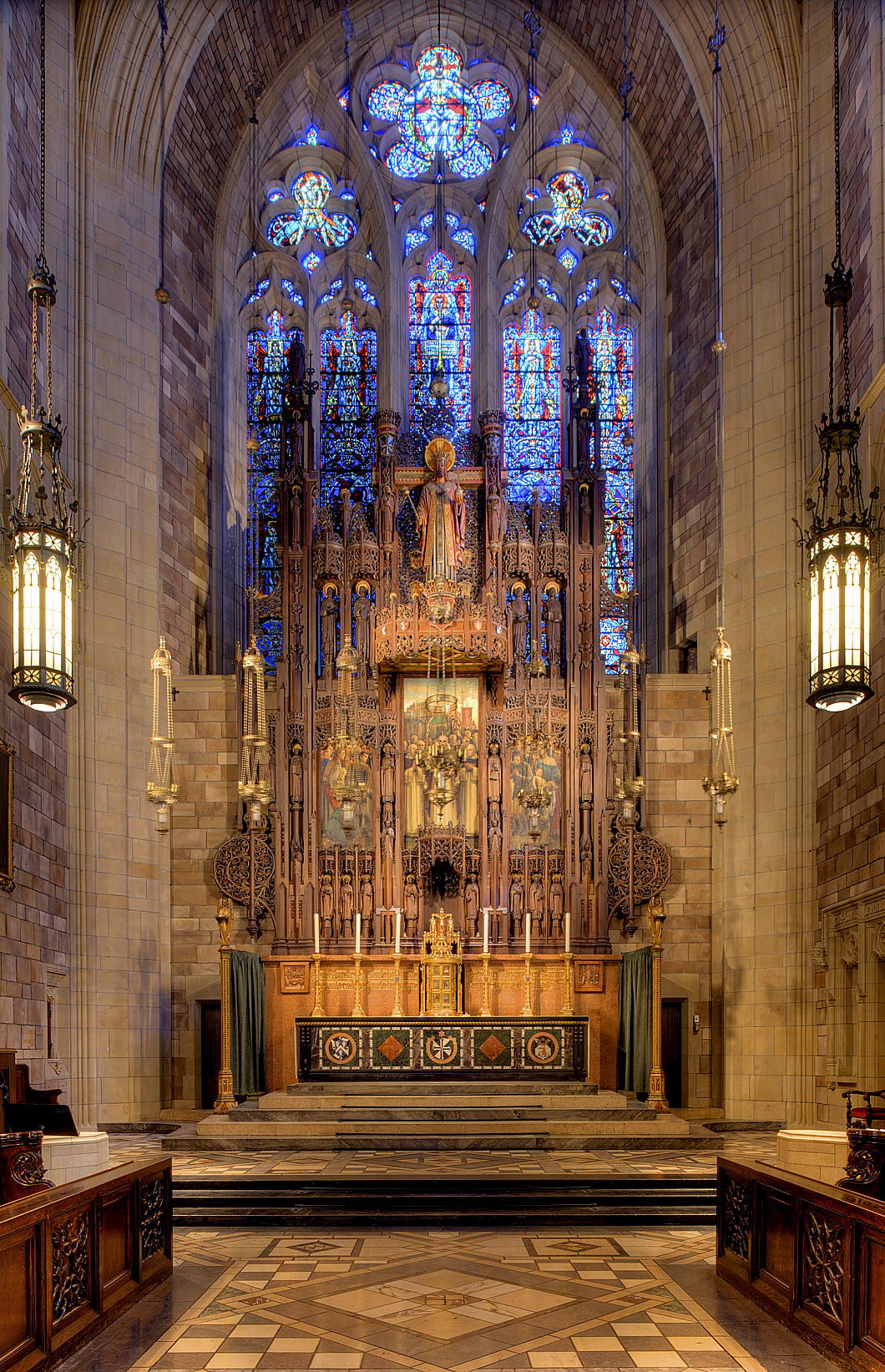
This week marked the ninetieth anniversary of the consecration of the high altar of the Dominican Church of St Vincent Ferrer in New York — one of the most beautiful churches in Manhattan.
To mark the occasion, a sung requiem Mass was offered in the Dominican rite (under the sponsorship of the New York Purgatorial Society) for the benefactors of the parish.
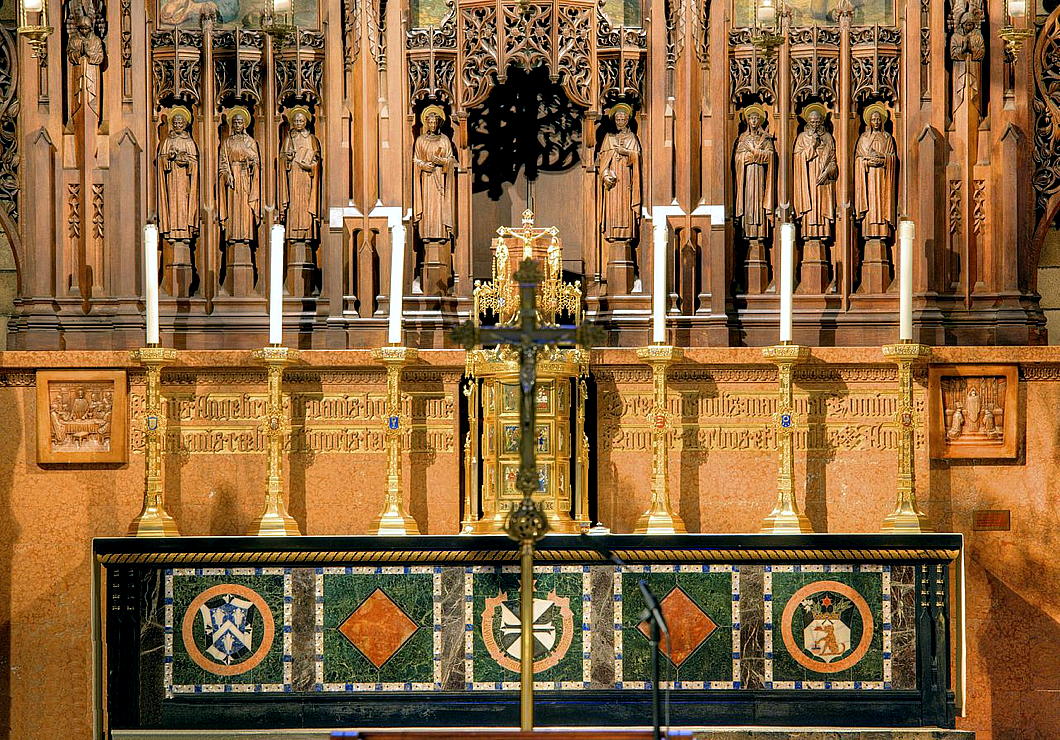
The parish also shared this explanation of the art and symbolism of the high altar:
The Altar itself, the footpace of which is atop five steps from the presbytery, is in the form of a sepulcher. The Mensa is of Belgian Black marble inlaid with five crosses of Red Verona. It measures 15 feet long, 3 feet wide, and 6 inches thick, weighing about 2 tons.
The Altar Front consists of uprights of Belgian Black and Lepanto Marbles. The Frontal has five panels in a field of Tinos Green surrounded by a border of Mother-of-Pearl and Lapis Lazuli. The three principal panels, left to right, are: the arms of the Dominican Province of Saint Joseph (notice the carpenter’s T-square and the lilies, symbols of Saint Joseph); the shield of the Dominican Order in black and white marble surrounded by a carved inscription of the Dominican motto, “Laudare, benedicere, praedicare” (to praise, to bless, to preach), this is capped with a star; another Dominican shield with the crown, dog, lily, laurel, and star. The carving on the Mensa and the Altar Frontal is finished off in gold.
The Reredos Wall, acting as a back to the Altar and a base for the Reredos, is of Siena Marble. The wall contains a carved inscription of the Eucharistic hymn “Panis angelicas” written by St. Thomas Aquinas, O.P. On each side of the inscription are carved two large corbels the subjects of which are the Last Supper and the Elevation of the Mass.
On the Mensa of the Altar there are also six large candle- sticks of gold-plated bronze. Each candlestick weighs eighty-five pounds. On each candlestick is a medallion containing a symbol of the Passion or the Holy Eucharist, from left to right: Crown of Thorns and Three Nails on a background of blue; silver Rooster; silver Chalice with a Host bering the emblem IHS; three fish on a background of red enamel representing the Holy Trinity; Veronica’s veil; money bag of Judas on a background of red.
The Reredos is a magnificent structure of wood carving which forms the setting for a central painted triptych by Alfredo Mira depicting the miracles of Saint Vincent Ferrer, twenty-four statuettes of saints, and thirty angels of varying sizes. Dominating the entire structure is a majestic figure of Christ the King, approximately eight feet tall. The Reredos, extending forty-four feet above the floor, is of Hungarian oak which is stained to preserve the natural color of the wood. The color work has been done sparingly since it was not intended to destroy the natural finish of the wood by complete polychroming; yet the figure of Christ the King and the tester or canopy above it have been elaborately colored.
The Tabernacle at the center of the Altar is of gold-plated bronze, with twelve panels of symbols and miniature Biblical scenes in colored enamels. On the left door are six images from the Old Testament in which the Eucharist is prefigured. On the right door is the fulfillment of those types in the New Testament and the early Church. The Tabernacle, with its triple crown, is intended to look like a medieval tent, the literal meaning of tabernacle.
The Altar and Reredos were imported from Belgium where they were constructed by Joseph Van Uytvanch of Louvain. Almost two years were required to complete the work. The scheme was conceived by Wilfred Anthony, Bertram Goodhue’s assistant on the project.
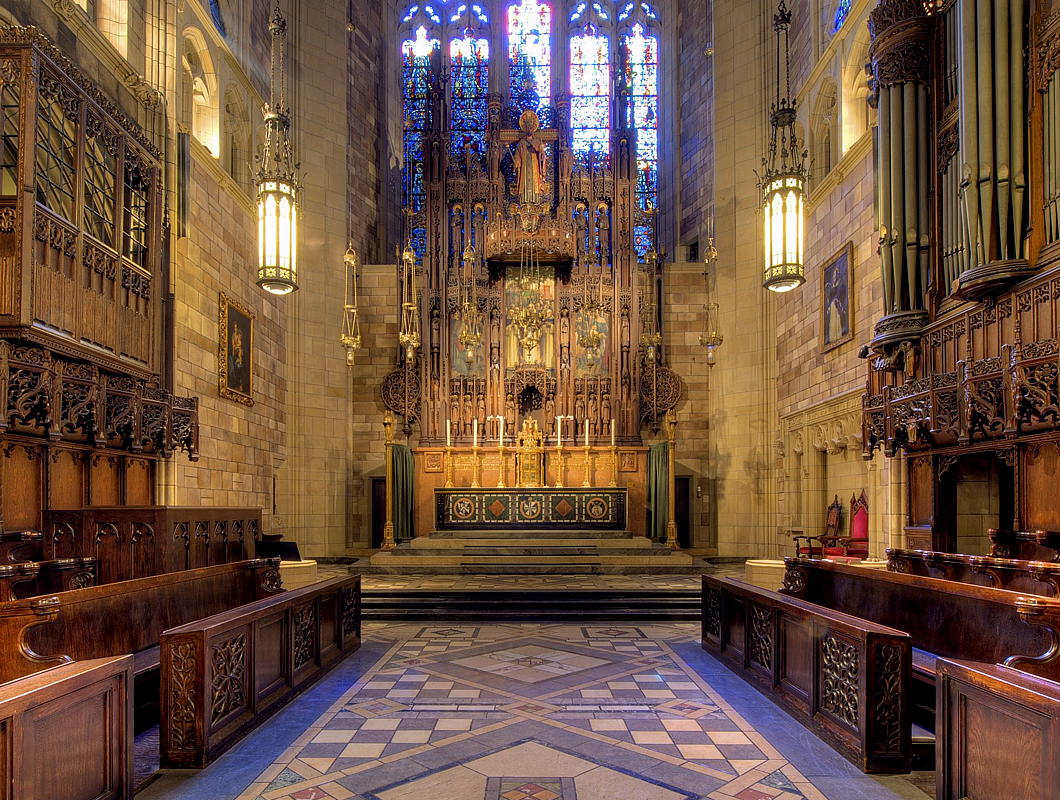
Gaullist California
A friend well conversant in my ongoing crusade to remind today’s centre-droit of the utility of the Gaullist experience writes in:
The Golden State once practised a very successful form of Cal-Gaullism, developing world-class infrastructure, research universities, new industries… and much of the place was solidly conservative.
Once upon a time, parts of Southern California (including Orange County) were deemed the most conservative places in America, from which Nixon, Reagan, and others sprang.
San Francisco, though still beautiful, is certainly now well past its prime; I remember that white tie and tails were still seen there regularly as late as the ’80s.
The Polish church in Los Angeles was built to serve the large number of Polish exile families (with fathers who were aerospace engineers trained in the RAF like mine) who came from the UK and Canada to work in what was then the world centre of the aerospace and defence industry — “the Gunbelt in the Sunbelt”.
A Realm That Never Was
The United Kingdom of the Rio de la Plata, Chile, and Peru
If we give in to temptation and attempt to see things without the benefit of hindsight, Brazil’s path to independence as a monarchy is less surprising than the fact that Argentina didn’t pursue a similar trajectory. After all: Argentina’s ‘Liberator’, José de San Martín, was himself a monarchist, as was Manuel Belgrano.
Belgrano’s project was to unite the Provinces of the River Plate with Chile and the old viceroyalty of Peru in one united kingdom under a Borbón king. This was to be the Infante Don Francisco de Paula, the youngest son of Charles IV of Spain, but the Spanish king ardently refused to yield his throne’s sovereignty over the new world, nor to allow any of his offspring to take part in the various projects for local monarchies.
When that failed, Belgrano proposed to the Congress of Tucumán that they crown an Incan as king. San Martín, Güemes, and others supported this, but Buenos Aires resisted the plan. They proposed instead to crown Don Sebastián, a Spanish prince living in Rio de Janeiro with his maternal grandfather, King João VI of Portugal.
João thought the scheme would end up injurious to Portugal’s interests and so put the kibosh on it.
And don’t get us started on Carlotism, which was a whole ’nother pile of tricks.

Belgrano’s monarchic project in its 1815 iteration was to unite the provinces of the River Plate with Chile and the old viceroyalty of Peru to create a single realm out of these Spanish-speaking territories.
He even drafted a constitution for the United Kingdom of the Rio de la Plata, Chile, and Peru, which is rudimentarily translated into English below. This even went so far as to specify the coat of arms and flag of the kingdom.
The best history covering these unconsummated plans remains Bernado Lozier Almazán’s 2011 book Proyectos monárquicos en el Río de la Plata 1808-1825: Los reyes que no fueron which sadly has not yet been translated into English.
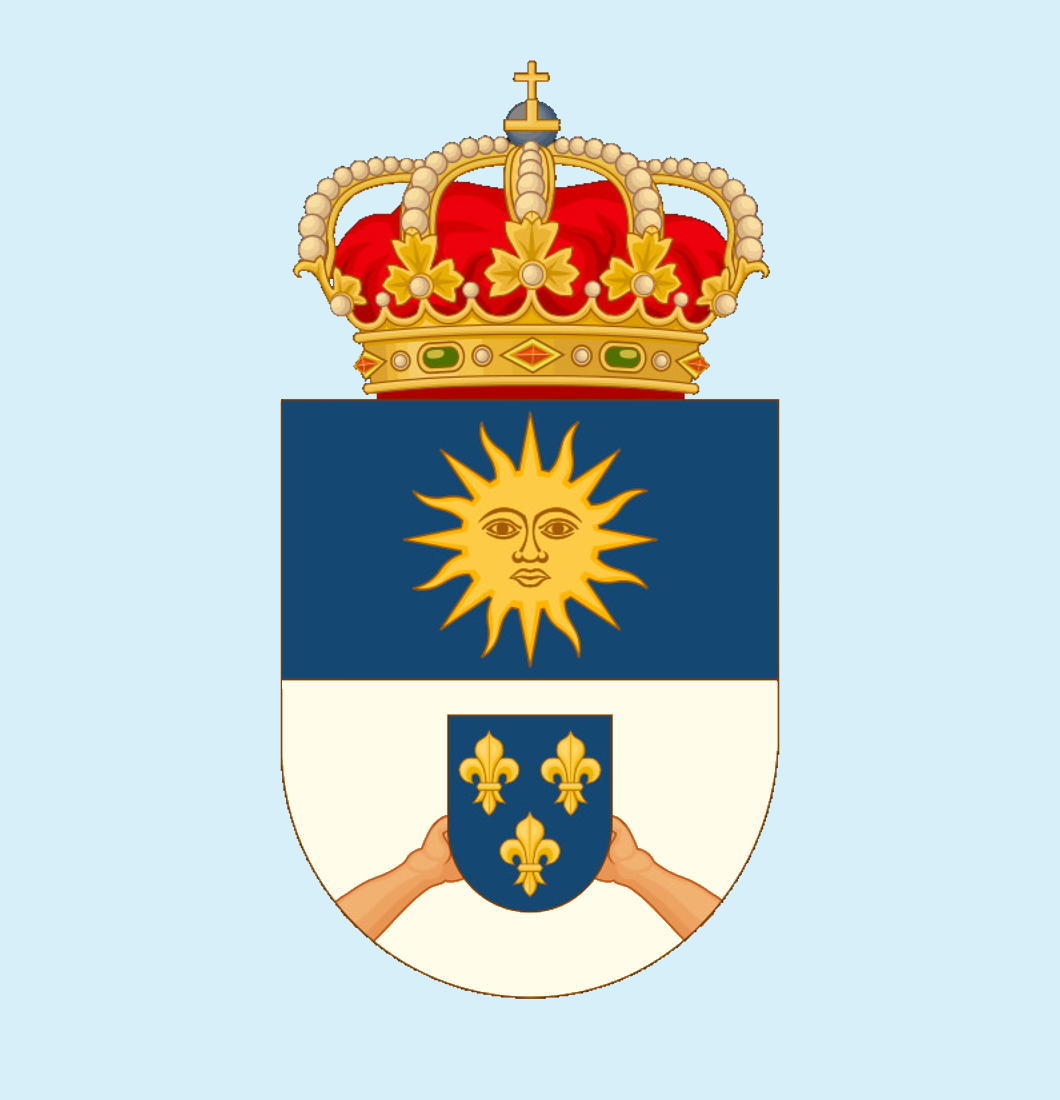
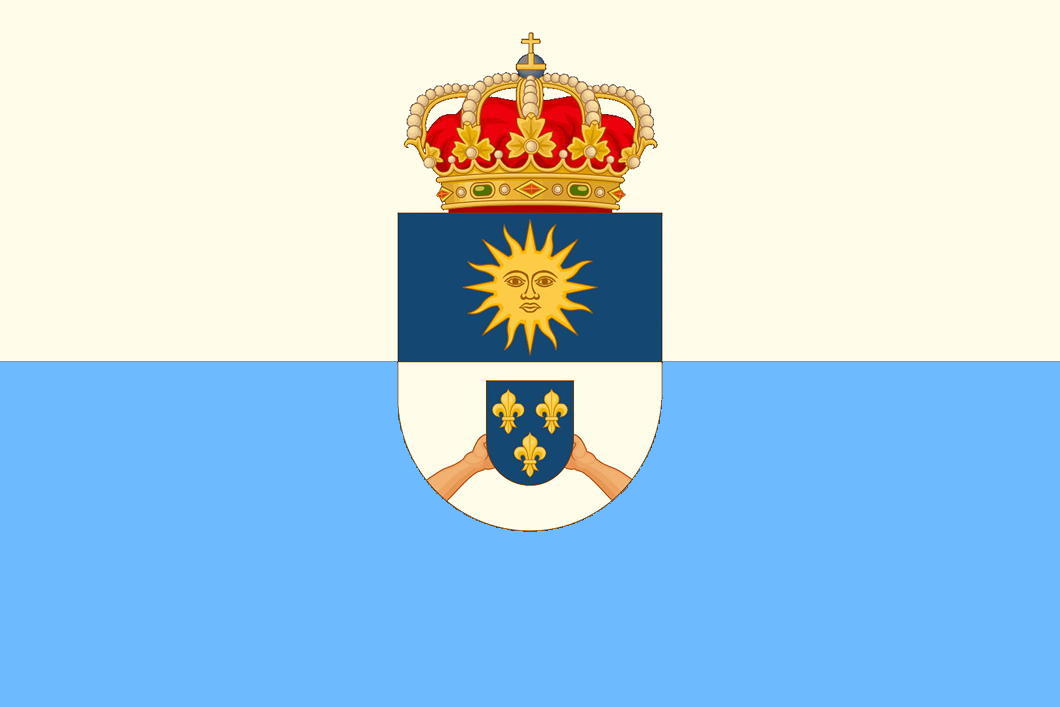
Article 1 — The new Monarchy of South America will have the name of the United Kingdom of the Río de la Plata, Peru, and Chile; its coat of arms will be a shield that will be divided into blue and silver fields; In the blue that will occupy the upper part, the image of the Sun will be placed, and in Silver two arms with their hands that will hold the three flowers of the emblems of My Royal Family; surmounted by the Royal Crown, and will have as supporters a tiger and a llama. Its flag will be white and light blue.
Article 2 — The Crown will be hereditary in order of proximity in the lines of agnation and cognation.
Article 3 — If, God forbid, the current King dies without succession, his rights will revert to me so that with the agreement and consent of the Legislative Body I choose another Sovereign from my Royal Family; but, if I no longer exist, said Chambers will have the power to elect one of the princes of my Blood Royal as their King.
Article 4 — The person of the King is inviolable and sacred. The Ministers are responsible to him. The King will command the forces of sea and land; he will declare war, he will make peace; he will make treaties of alliance and trade; he will distribute all the offices, he will be in charge of the public administration, the execution of the laws, and the security of the State to whose objects he will give the necessary orders and regulations.
Article 5 — The King will name all the nobility; he will grant all the dignities, he will be able to vary them and grant them for life, or make them hereditary. The King may forgive offences, commute sentences, or dispense them in the cases that the law grants him.
Article 6 — The nobility will be hereditary in the same terms as the Crown; it will be distinguished precisely in three grades, and cannot be extended to more: the first grade will be that of Duke, the second of Count and the third of Marquis; the nobles will be judged by only those of their class, they will have part in the formation of the laws, they will be able to be Deputies of the Towns and they will enjoy the honours and privileges that the law or the King grants them; but they may not be exempted from the charges and services of the State. Any individual of the State of any class and condition may opt for the nobility for their services, for their talents, or for their virtues. The first number of the nobility will be agreed by the King and Representative and at any other time by the Legislative Body.
The Legislative Body
Article 7 — The Legislative Body will be composed of the King, the Nobility, and Representation of the Commons.
The Upper Chamber will be formed: the first part by all the Dukes, whose right is declared inseparable from their dignity; the third part of the Counts, by election among themselves, presided over by a King’s Commissioner; the fourth part of the Marquises, elected on their own terms; and the fifth part of the Bishops of the Kingdom, elected the first time by the King, being in charge of it and the other Chamber, to establish the bases for the election of this body for the future.
Article 8 — The Second Chamber will be made up of the Deputies of the Peoples, who will be elected for the first time in the customary terms that allow less play to the parties, and will consult the greatest opinion, it being an essential charge to the Legislative Body to establish for the latter the most adequate and precise laws.
Article 9 — The power to propose the law will be common to the King and both Chambers; the order of the proposition will be from the King to the First Chamber, and from this to the King, and from the Second to the First, in the event that a proposal is not admitted by its immediate chamber, it cannot go to the third, nor be repeated until another session. Every law will be the result of the plurality of both Chambers, and secondly of the King; the sanction and promulgation of the law will be exclusively his.
The chambers may not join or dissolve without the express order of the King. He will be able to extend them for as long as he deems it necessary, and dissolve that of the Deputies when he deems it appropriate.
Article 10 — The designation of the King’s income, his Royal House and Family, the expenses of his Minister and Cabinet, the civil list, the military, and extraordinary expenses will be exclusively agreed by both Chambers, to which in the same way belongs to the arrangement and imposition of rights and contributions.
The Ministry
Article 11 — No order of the King without the authorisation of his corresponding Minister will be fulfilled; the Ministers will have the power to propose to both Chambers what they deem appropriate, and enter any of them to report what they deem appropriate; the Ministers will indispensably be Members of the High Court, and only by it may they be judged. The Ministers may not be accused except for treason or extortion, the accusation will not be admissible unless it is made by the plurality of one or another Chamber; the Minister of Finance will present to both Chambers for their knowledge and approval the accounts of the previous year.
The Judiciary
Article 12 — The judges will be appointed by the King; they will be perpetual and independent in their administration, only in the case of notorious injustice or ruling can they be accused before the Upper Chamber who will judge them independently of the King, who will protect and execute their decisions in this part; The judges of the fact will be established, called the jury in the most adaptable way to the situation of the Towns.
The Commonalty of the Nation
Article 13 — In addition to the proportionate and uniform distribution of all charges and services of the State, the option to nobility, jobs and dignities, and the common competition and subjection to the law; The Nation will enjoy, with the inalienable right to property, freedom of worship and conscience, freedom of the press, the inviolability of property, and individual security in the terms clearly and precisely agreed upon by the Legislative Power.
Those elected by the nobility, clergy, and commonalty will last six years, starting to renew the first elected by half every three years: The Common Deputies may not be executed, persecuted, or tried during their commission, except in cases that the law designated and by the Chamber itself to which they belong.
The George
“FORTUNATE IS SOUTHWARK in her possessions,” Sir Albert Richardson wrote, “for she holds in this fragment a key to the aspect of her many vanished inns…”
The George Inn features largely in the deep psychogeography of Southwark, ours the most ancient of boroughs. Here is the greatest living remnant of the coaching inns of old, even if much reduced in form. The current structure dates from the 1670s but we know an inn on this site was well established by the 1580s. It is now in the possession of the National Trust, but is a functioning Greene King pub where you can find a good pint.
Up and down our High Street, for centuries merchants, travellers, traders, and revellers would slake their thirst in a procession of pubs, inns, and taverns. English pilgrims heading to Canterbury would start off here, and recent arrivals to London from the Continent would make their first acquaintance with England’s capital by arriving at “The” Borough after journeying from the Channel ports.
“One enters the inn yard with pleasurable anticipation,” Sir Albert continues in his 1925 volume, The English Inn, Past and Present; A Review of Its History and Social Life.
“There is fortunately sufficient of the old building remaining to carry the mind back to the days of its former prosperity. There are the sagging galleries, the heavily-sashed windows and the old glass in the squares. The rooms are panelled. In the dining-room are the pews, and the bar is typical.”
In Richardson’s time, just a century ago, these rooms would have often been full of hop growers from Kent and the hop merchants who traded with them, though they are all gone now.
And yet, some things have not changed:
“Here we can obtain old English fare, and, heedless of the beat of London, commune with ghostly frequenters to whom the place was at one time a reality.” (more…)
A Night Litany for London
Wanderers in central London who find themselves in the whereabouts of Piccadilly Circus or Soho of a Tuesday evening can avail themselves of the devotions offered by the Guild of Our Lady of Warwick Street.
Every week, the Rosary is said along with other prayers at this statue in Warwick Street Church. They conclude with the rather beautiful and moving ‘Night Litany for London’ imploring God’s mercy upon the many inhabitants of our capital city.
Its original form is believed to have been composed by the Rev’d H.A. Wilson, vicar of the Protestant parish of St Augustine in Haggerston. Msgr Graham Leonard — in the days when he was Anglican Bishop of London — also published a version through the Church Literature Association (a High Church body) with an introduction he wrote himself.
The version used at Warwick Street is included here:
OUR LADY of Warwick Street,
we plead before Thee
to present our prayers before the Throne of Grace
for all in this great city of London
who tonight need Thy merciful love and protection.
ON ALL who work tonight —— Lord, have mercy.
On the police, fire, and ambulance services —— Lord, have mercy.
On hospitals, doctors, and nurses —— Lord, have mercy.
On clergy and chaplains called out tonight —— Lord, have mercy.
On the homeless and destitute —— Lord, have mercy.
On all lost and vulnerable people —— Lord, have mercy.
On the lonely —— Lord, have mercy.
On the elderly —— Lord, have mercy.
On abused children —— Lord, have mercy.
On loveless marriages and broken homes —— Lord, have mercy.
On those who self-harm —— Lord, have mercy.
On the sick and suffering —— Lord, have mercy.
On the mentally ill —— Lord, have mercy.
On those undergoing operations —— Lord, have mercy.
On those who cannot sleep tonight —— Lord, have mercy.
On those who are depressed —— Lord, have mercy.
On those who misuse the internet —— Lord, have mercy.
On all prisoners and prison staff —— Lord, have mercy.
On all prostitutes and their clients —— Lord, have mercy.
On those addicted to alcohol and drugs —— Lord, have mercy.
On all immigrants feeling lonely and insecure tonight —— Lord, have mercy.
On all who live in fear —— Lord, have mercy.
On all victims of crime —— Lord, have mercy.
On those planning to commit a crime tonight —— Lord, have mercy.
On those who are driving tonight —— Lord, have mercy.
On all involved in accidents —— Lord, have mercy.
On those who are bereaved tonight —— Lord, have mercy.
On those for whom tonight will be their last on earth —— Lord, have mercy.
On those dying without the knowledge of Thy Love for them —— Lord, have mercy.
On those who are afraid to die —— Lord, have mercy.
On those tempted to suicide —— Lord, have mercy.
On the terminally ill —— Lord, have mercy.
On ourselves at our last hour —— Lord, have mercy.
ON BEHALF of all Londoners who today have said no prayers, let us say together:
Our Father …
Hail Mary …
℣. Most Sacred Heart of Jesus: ℟. Have mercy upon us. (thrice)
‘We trust no one would ever think of such a thing’
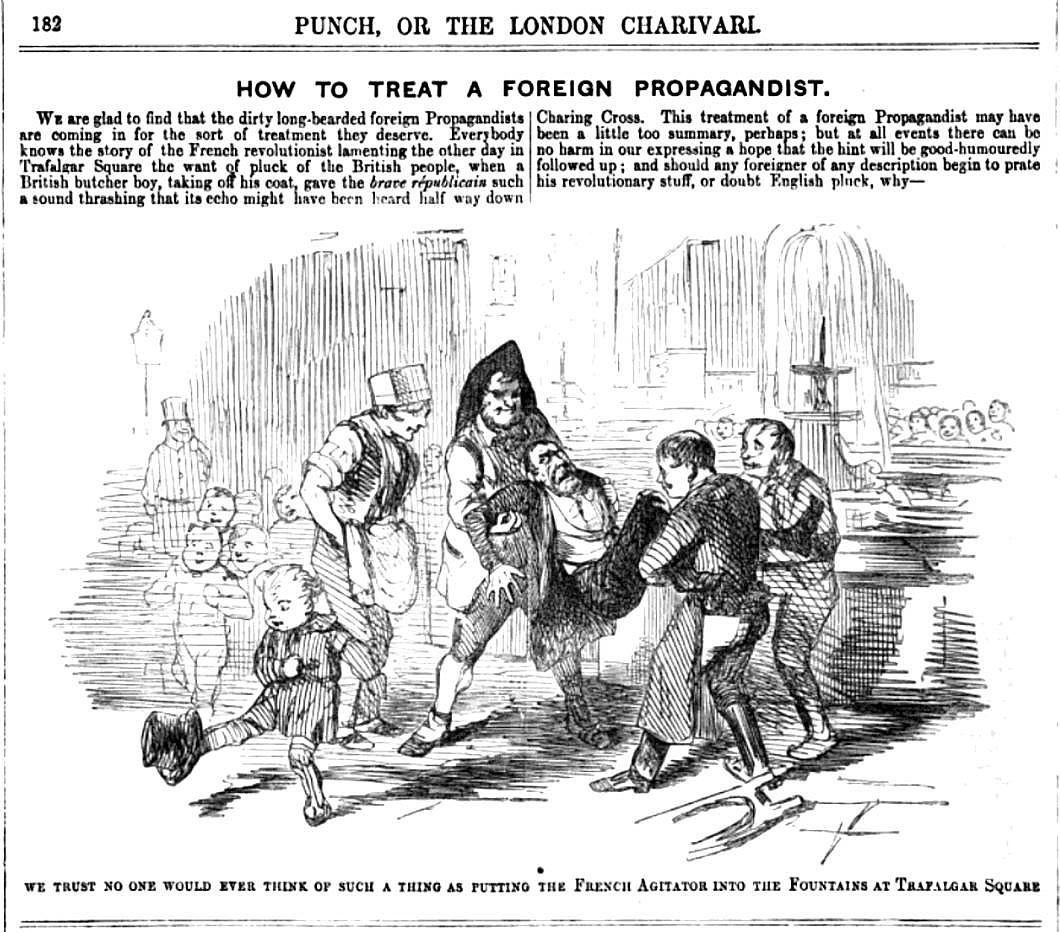
Ladies and gentlemen of ‘the left’, whether foreign or domestic, have long groaned over the earnest patriotism and lack of zeal for revolutionary destruction amongst the British working classes.
As this snippet from an 1848 issue of Punch shows, when the fighting power of Britain’s workers is unleashed, it’s usually channelled against the zealots and in defence of hearth of home:
Everybody knows the story of the French revolutionist lamenting the other day in Trafalgar Square the want of pluck of the British people, when a British butcher boy, taking off his coat, gave the brave républicain such a sound thrashing that its echo might have been heard half way down Charing Cross.
This treatment of a foreign Propagandist may have been a little too summary, perhaps; but at all events there can no harm in our expressing a hope that the hint will be good-humouredly followed up; and should any foreigner of any description begin to prate his revolutionary stuff, or doubt English pluck, why —
Sombre Land of Shadow and Light
The Budapest of Demeter Balla
Soviet socialism imposed many grim miseries upon the Hungarian people once the German occupation under the National Socialists was replaced by a Russian one under the Red Army. In 1945, Hungarians were allowed one free election in which the Communists were resoundingly defeated.
Two years later, the Russian occupiers allowed another election yet — despite violent intimidation and manufacturing as many as 200,000 false ballots — the Communists still only improved their vote share to 22%. But through various mechanisms it was enough to seize control of the government, take over the other parties, and merge them all into a pro-Soviet front.
A decade later, the 1956 uprising sparked a Soviet invasion to prevent Hungary leaving the Warsaw Pact turning off the road to full communism. It did, however, convince Hungary’s communist hardliners that while total control over all political, social, and economic institutions needed to be maintained, they also needed to lighten the mood. A little more carrot, a little less stick (but keep the stick).
Human beings have a way of sorting themselves out as best they can and persisting despite a multiplicity of hardships. These photographs of Budapest in the 1950s, 60s, and 70s by Hungarian photographer Demeter Balla (1931-2017) bear witness to the quiet dignity of the inhabitants of a capital city still stuck behind the Iron Curtain. (more…)
Weiter vorwärts

The Pale Blue Eye

Just as there aren’t enough films set in seventeenth-century Holland, we don’t get enough films set in God’s own Hudson Valley of New York. When I saw the trailer for ‘The Pale Blue Eye’, a semi-supernatural mystery set in 1830s West Point, I thought: yes, sign me up.
A cadet at the military academy is found hanged and, a day later, his heart carved out. USMA commandant Sylvanus Thayer enlists the help of Augustus Landor, a former detective from New York City — in the pre-NYPD days when crime was fought by an odd hodge-podge of the night watch, city magistrates, and a few dozen constables.
Conveniently for Thayer, the highly reputed Landor has retired to the Hudson Highlands. Thayer hopes his investigation will prevent any scandal giving impetus to the still-fledgling Academy’s enemies in Washington.
Conveniently for Landor, he is aided and abetted in this task by an eccentric bohemian amongst the “Long Gray Line” of cadets: Edgar Allan Poe. The paragon of American Gothick was indeed a cadet at West Point in 1830 under his own name, after having spent a few years in the Army as an enlisted man under a pseudonym.
It would be easy to reduce any film with Poe as a central character to a procession of campy retro-emo tropes, but the role is played by Harry Melling with surprising skill. Timothy Spall plays Sylvanus Thayer — rather unfairly, I thought — with Simon McBurney as the commandant’s sidekick Captain Hitchock.
Toby Jones is the academy doctor with Gillian Anderson as his scheming, driven wife, Lucy Boynton the beautiful daughter (apple of the eye of many a cadet) and Harry Lawtey as their smug son Artemis, also enrolled in the Academy.
It is a fundamental Cusackian principle never to let the perfect be the enemy of the good, so I won’t complain that ‘The Pale Blue Eye’ is actually filmed in western Pennsylvania rather than along the actual banks of the Hudson. Riparian overdevelopment makes it difficult to evoke the Hudson of 1830s effectively today, and the filmmakers have done well recreating the spirit of the gothic revival era in America’s Rhineland with the locations they chose and the set design. This is fiction, after all, and it needn’t be pedantically true to the time-period — so long as nothing jars.
As it proceeds, the plot is intriguing, fantastic, and absurd and it gives us a final twist in the end. Some strands develop a little two quickly — the connection between Poe and Lea — and Robert Duvall’s role as an expert in the occult is too much of a deus ex machina.
But this is simple fun, not high art, and as a gothick conjuring of a formative but under-explored time and place it is well worth a viewing. (more…)
Search
Instagram: @andcusack
Click here for my Instagram photos.Most Recent Posts
- Faithful Shepherd of the Falklands April 8, 2025
- Articles of Note: 8 April 2025 April 8, 2025
- Proportionality Destroys Representation April 8, 2025
- Sag Harbor Cinema March 26, 2025
- Teutonic Takeover March 10, 2025
Most Recent Comments
Book Wishlist
Monthly Archives
Categories

